Have you ever wondered what it’s like to be in paradise? And to paradise with a bike? If your answer is yes, then you’ve undoubtedly thought about the number one bike park in the world, Canada’s Whistler Mountain Bike Park! For fans of gravity mountain biking, it’s a true Holy Grail, a true Mecca of freeride riding, and a place you should visit at least once in your life.
For the 2025 season, to experience a bit of summer (very ugly weather in Poland), we had to head to Canada. For editor Tina, it was her first time, and for me, it was a return to this legendary spot after 16 years. What did we find there? And is it really the number one destination in the world? Let’s find out!
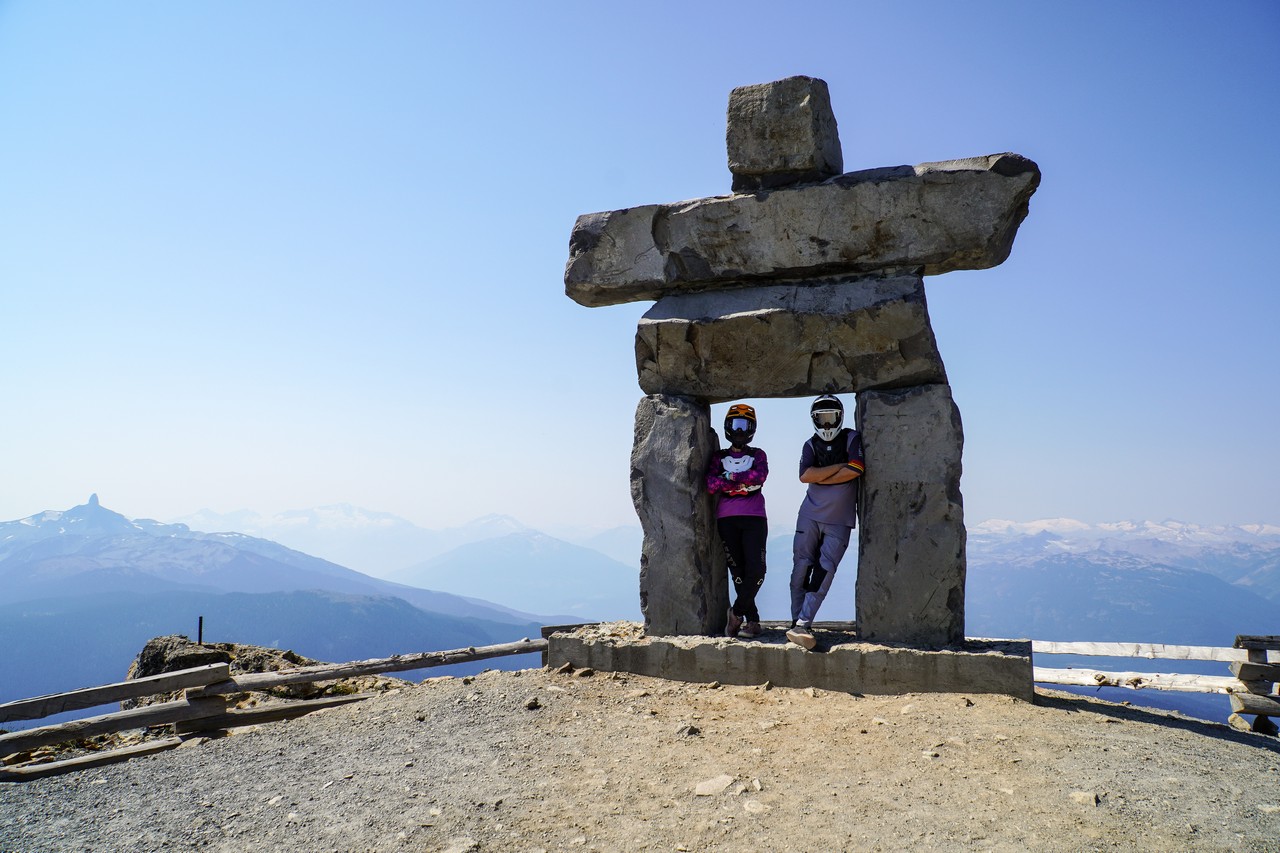
Whistler Mountain Bike Park
Whistler is a small town of approximately 10,000 people located 125 km north of Vancouver, in the Squamish-Lillooet district of British Columbia, Canada. It’s well-known among winter sports enthusiasts and is one of the most popular resorts in North America. In summer, it’s a true paradise for mountain biking enthusiasts, primarily thanks to the Whistler Mountain Bike Park. In 2010, Whistler hosted several disciplines during the Vancouver Winter Olympics.
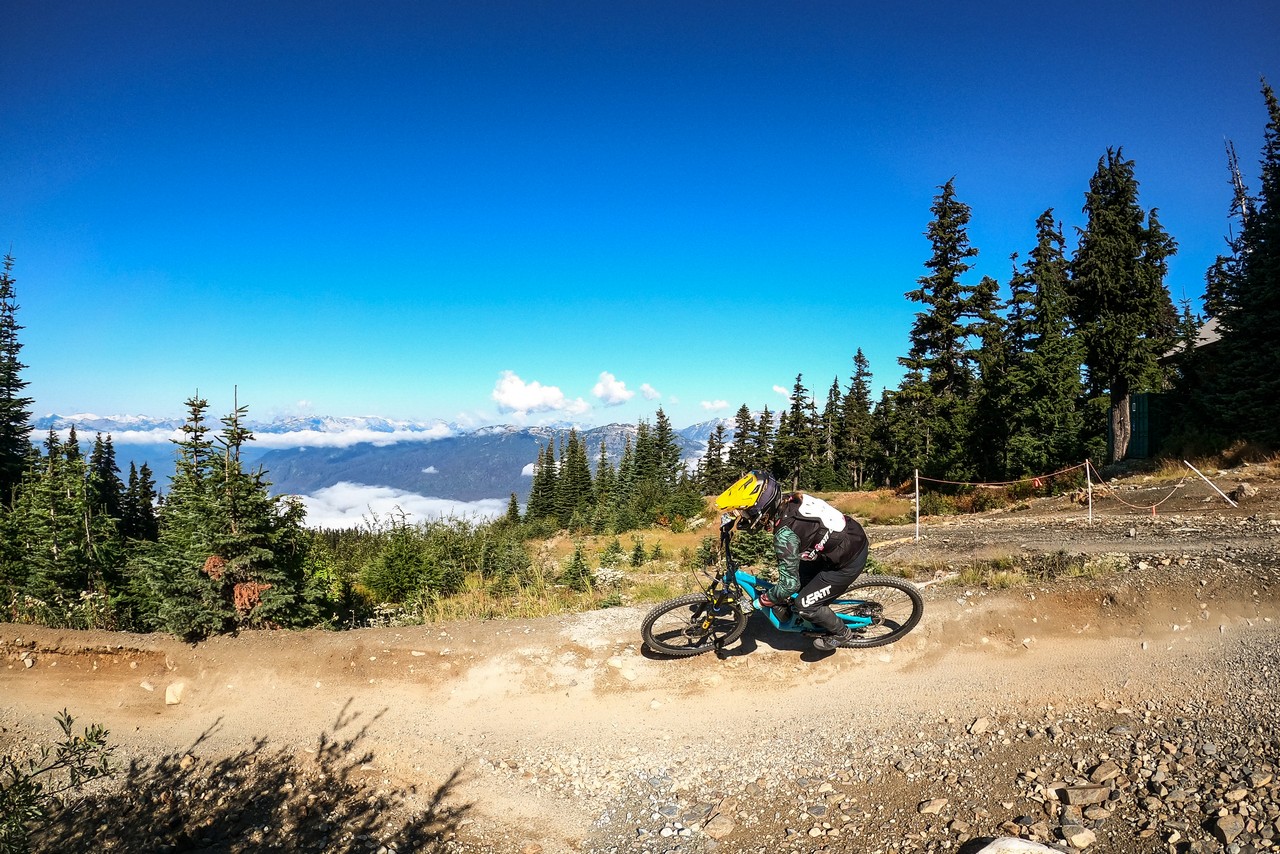
Whistler Mountain Bike Park opened in 1999 and has been steadily growing ever since, delivering a wealth of thrills, and remaining a top destination for every freeride fan (and anyone else) to visit at least once in their life. Is it mountain biking heaven on earth? Absolutely!
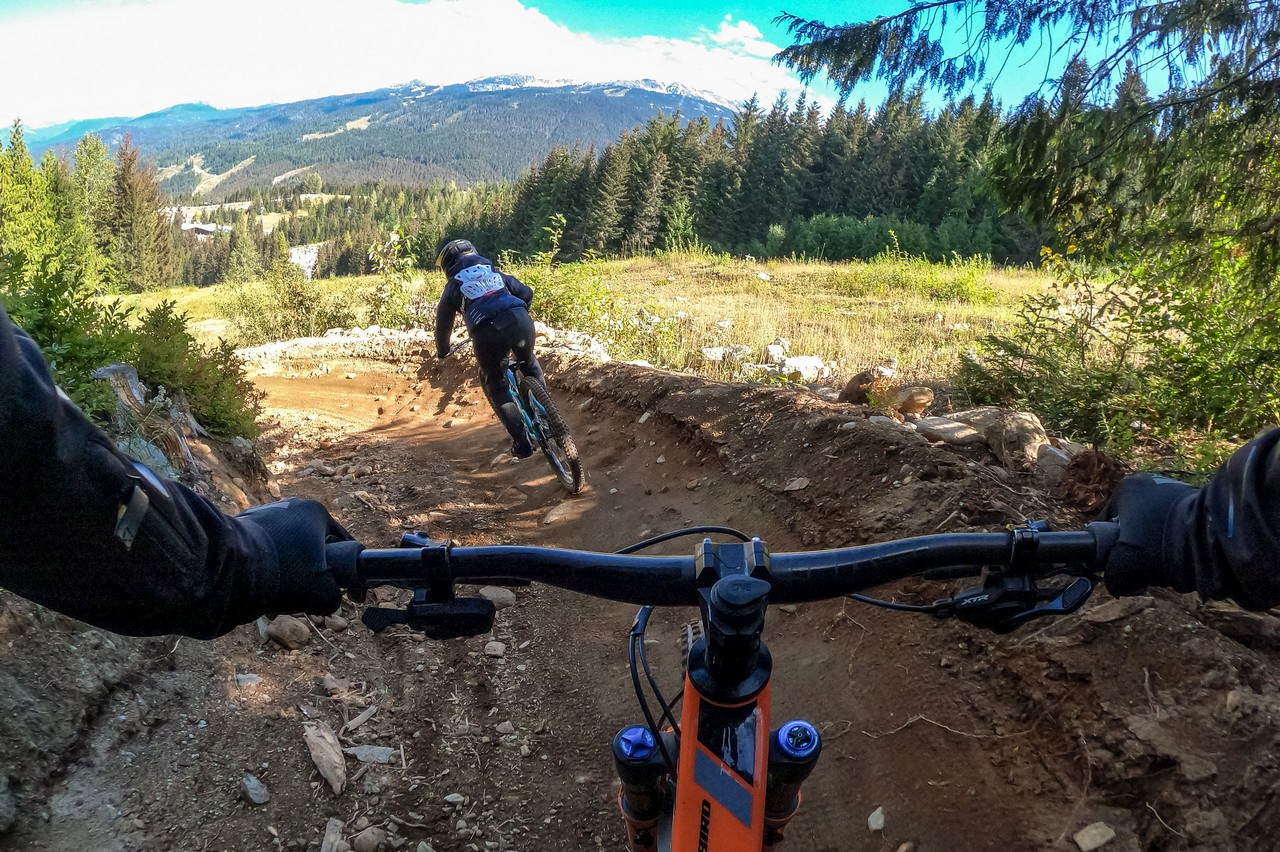
It’s worth noting that Whistler Mountain Bike Park is located on Whistler Mountain and is surrounded by mountains that aren’t particularly high comparing to European Alps (averaging around 2,000-2,500 meters above sea level), but its scale and quantity make all the difference. Looking around, we see vast mountain ranges with numerous glaciers, and Black Tusk stands out from all this, undoubtedly the most famous of the surrounding peaks.
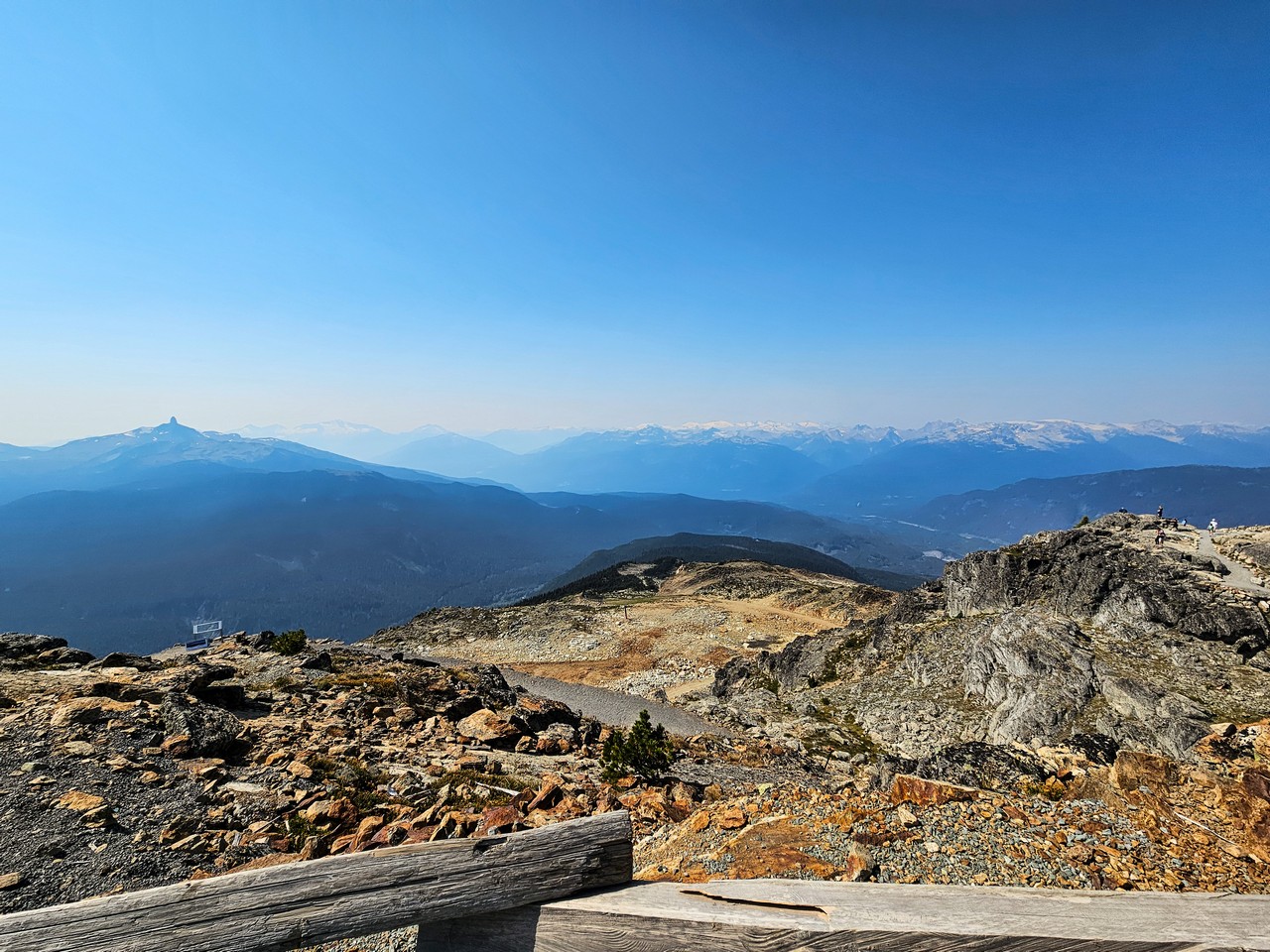
The Whistler Bike Park itself is divided into four main zones, which are open at different times, and each of them is served by a separate lift:
- Fitzsimmons – The main and oldest area in the heart of Whistler Village. It’s also home to the famous Boneyard, home to the Crankworx Whistler festival.
- Garbanzo – The second zone to be opened is located above the Fitzsimmons zone and offers descents from an altitude of 1850 m above sea level.
- Peak – The highest zone, consisting essentially only of the Top of the World trail (6.2km, -721m). Opened to riders in 2014 with limited daily access.
- Creekside – The fourth and newest zone, opened in 2015. It offers 27 trails and a vertical drop of 647 meters. Access to the slopes is available from, among others, the upper Garbanzo zone, while the gondola reaches its lower section.
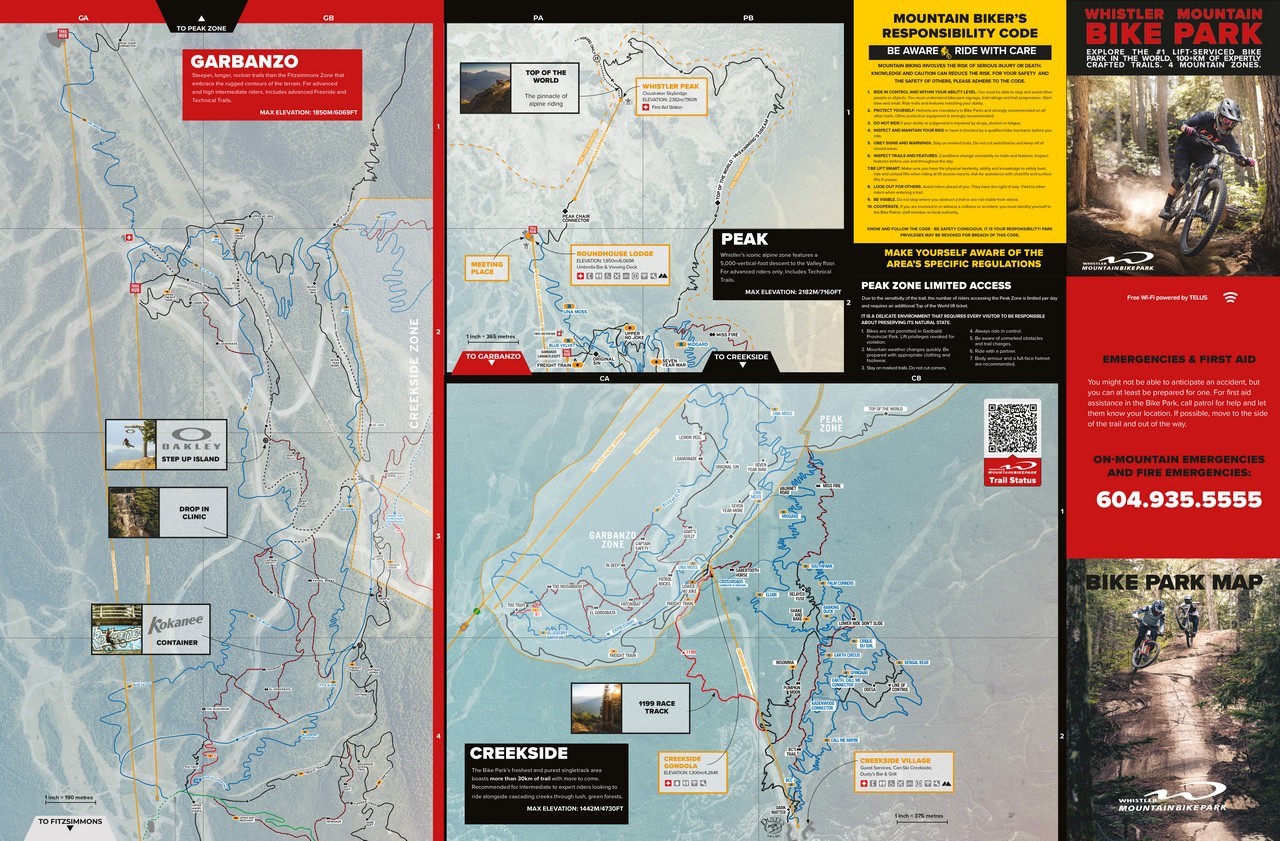
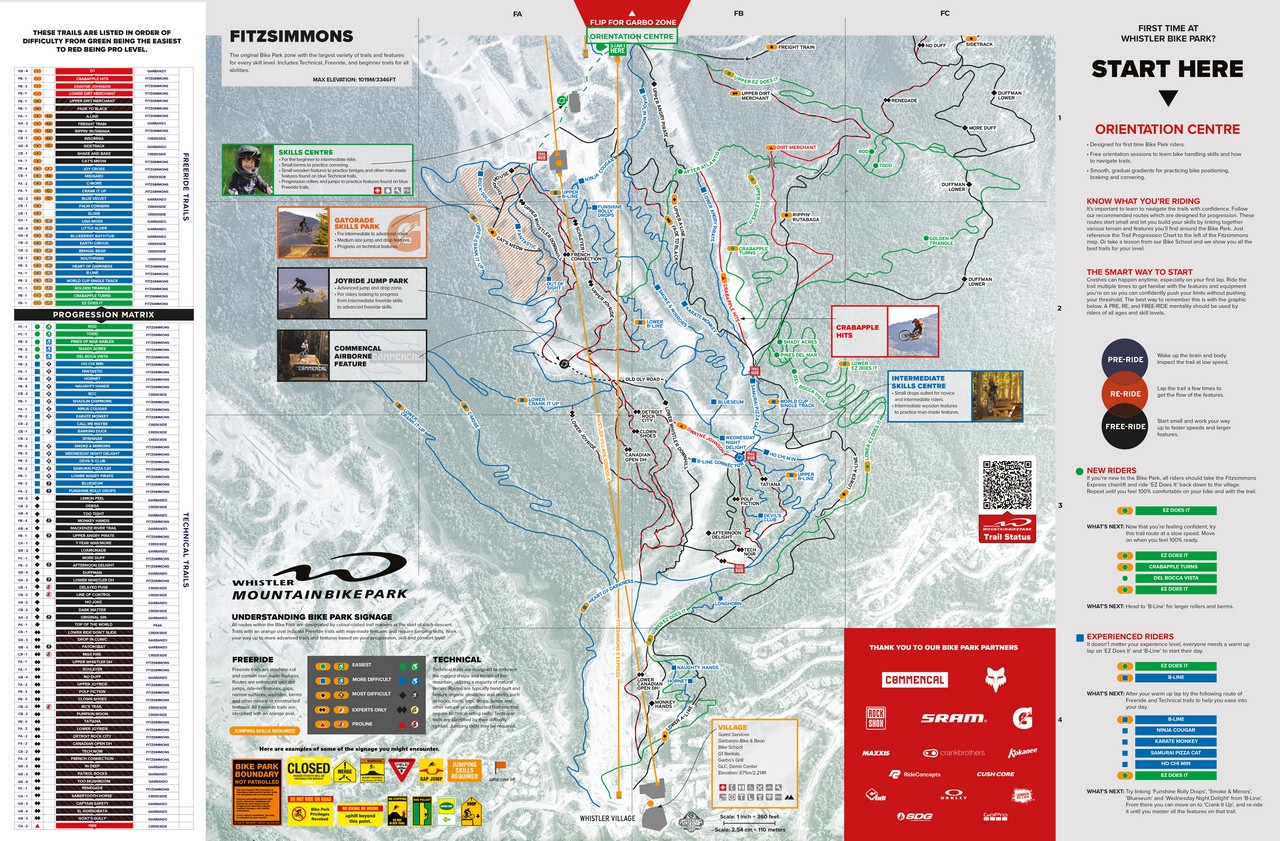
The official map lists 100 trails, but in practice, there are quite a few more. I counted over 120, and during our trip, we managed to complete 77 of them at least once. We’re practically left with only the most challenging lines, so we definitely have a reason to come back ;)
The most important thing, however, is not the quantity, but the quality of these trails. The official 100 is divided into jumpline (32 trails) and tech trail (68 trails), and is also color-coded. This means that you’ll find something practically unheard of in Europe, such as green technical trails. In short, this simply means that absolutely everyone will find something for themselves, regardless of their riding skill level, age, gender, or equipment.
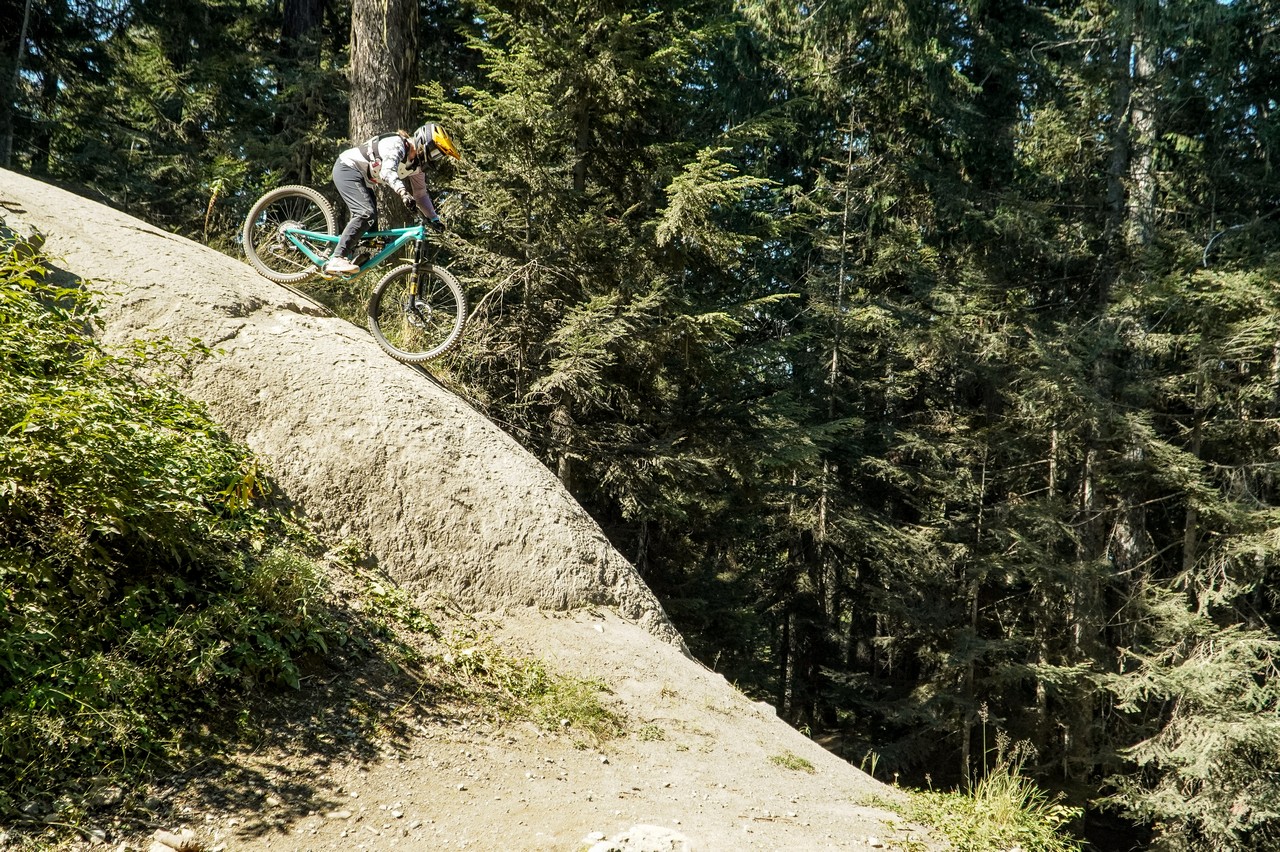
The official map makes the experience much easier, as it clearly shows the order in which you should explore each trail, and they’re listed in order of difficulty. I’m deliberately omitting their names here, as some are quite amusing. ;) Europeans should note that the most challenging lines (pro lines) are marked in red here, while what we know as a double black diamond is marked in Canada with the same symbol and red and black.
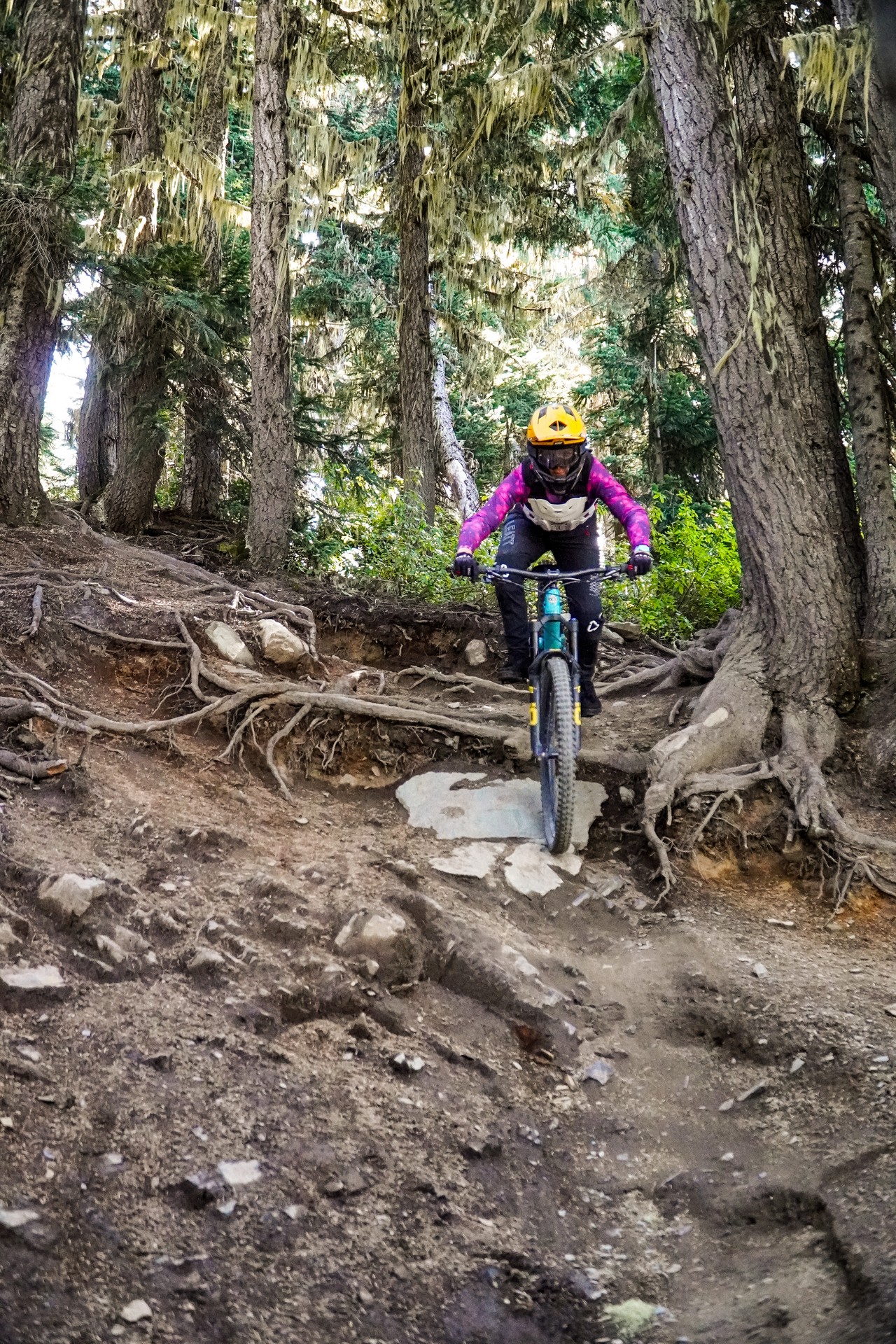
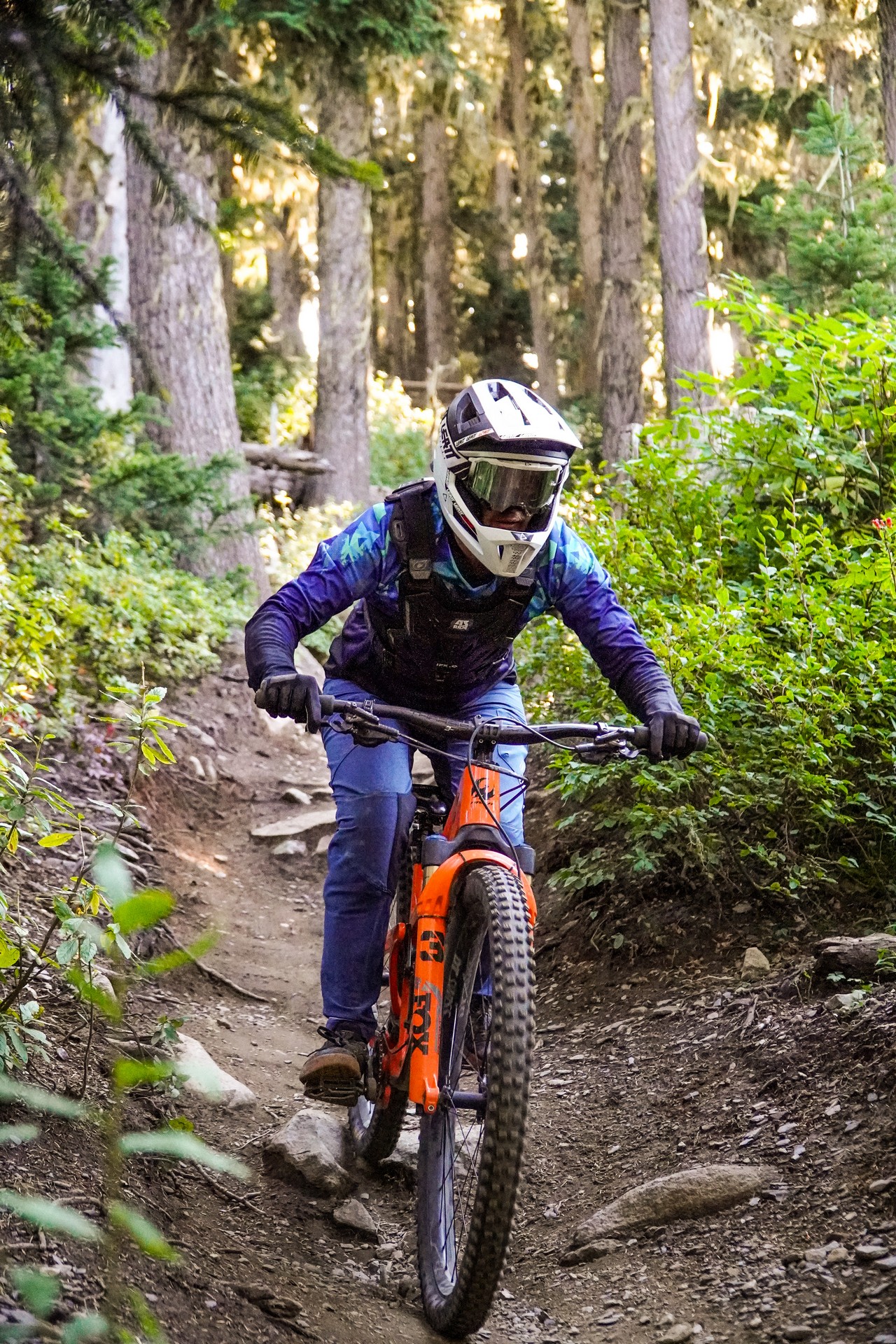
Diversity is one thing, but what about the physical condition? First and foremost, it’s clear that a huge number of riders ride the local trails every day. In some places, the trails are quite worn, in others less so, and some look as if they haven’t seen any riders at all. However, they are still generally well-maintained, and the washboards and braking bumps are fewer than in France, for example. I found information somewhere that this year, of the 25 people who regularly maintain the trails, only eight remain, but I haven’t been able to confirm this. If true, it’s safe to assume the trails here are in very good condition, especially since Canada has once again had a very dry summer (it rained for 1.5 days during our three-week trip).
There is no point in writing about each line individually, so let’s see roughly what each of the four zones has to offer.
Fitzsimmons Zone
This is where it all began. In 1999, the first bike lift opened, and the first area they were allowed to use was the Fitzsimmons section. It has the most trails in the entire complex (53), the highest riders traffic, the longest-running section of the Bike Park, and, unfortunately, the most dilapidated.
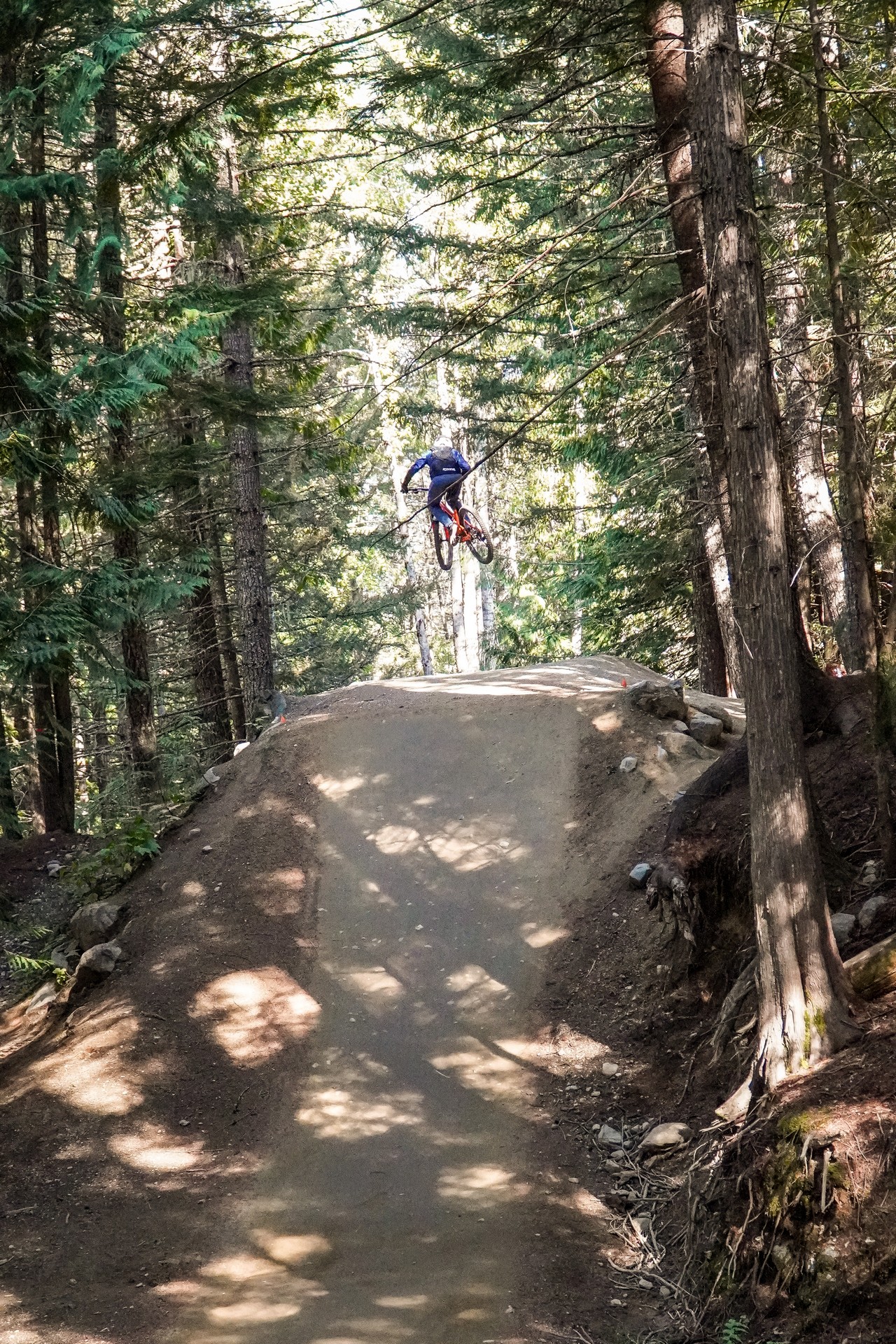
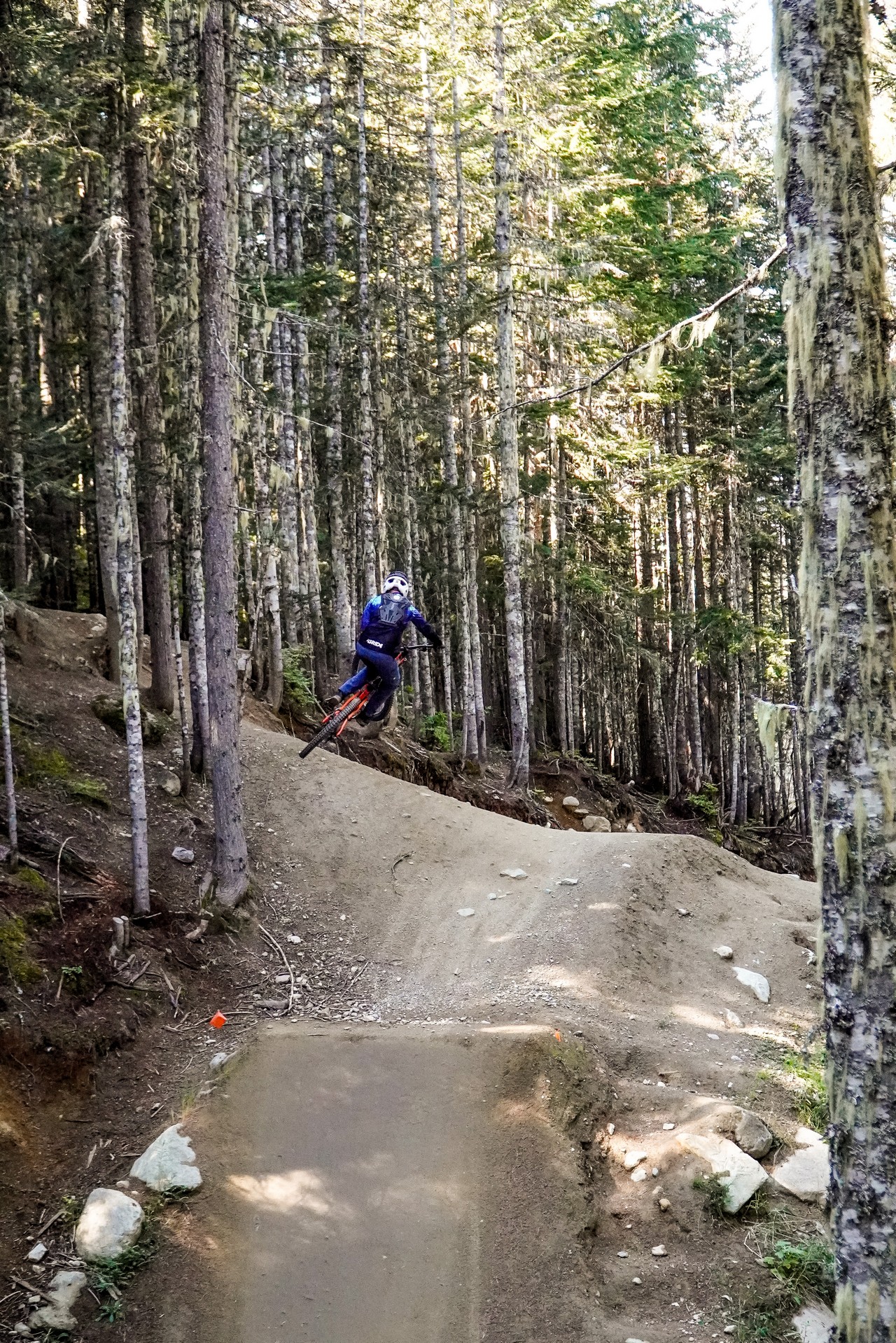
It is in this zone that such legendary trails as:
- A-Line – The first jumpline in history, built using machines, the godfather of all jump trails.
- Dirt Merchant – A more advanced version of A-Line, and for several years now part of the trail has been classified as Pro Line with really good & big jumps.
- Crabapple Hits – FEST Series-worthy jumps at the Bike Park? Here you go! Just a few in-line jumps, but at enormous heights, high speeds, and sizes of around 20m!
- Canadian Open DH – One of the most popular and oldest downhill races in the history of North America takes place on this trail.
- Boneyard – The Boneyard isn’t a track, but a real symbol of the Crankworx Whistler festival. In winter, it serves as a ski run and part of the slope park, while in summer, trails are built here every year for the world’s most important freeride bike festival, Crankworx Whistler, including the Dual Slalom and the Red Bull Joyride course.
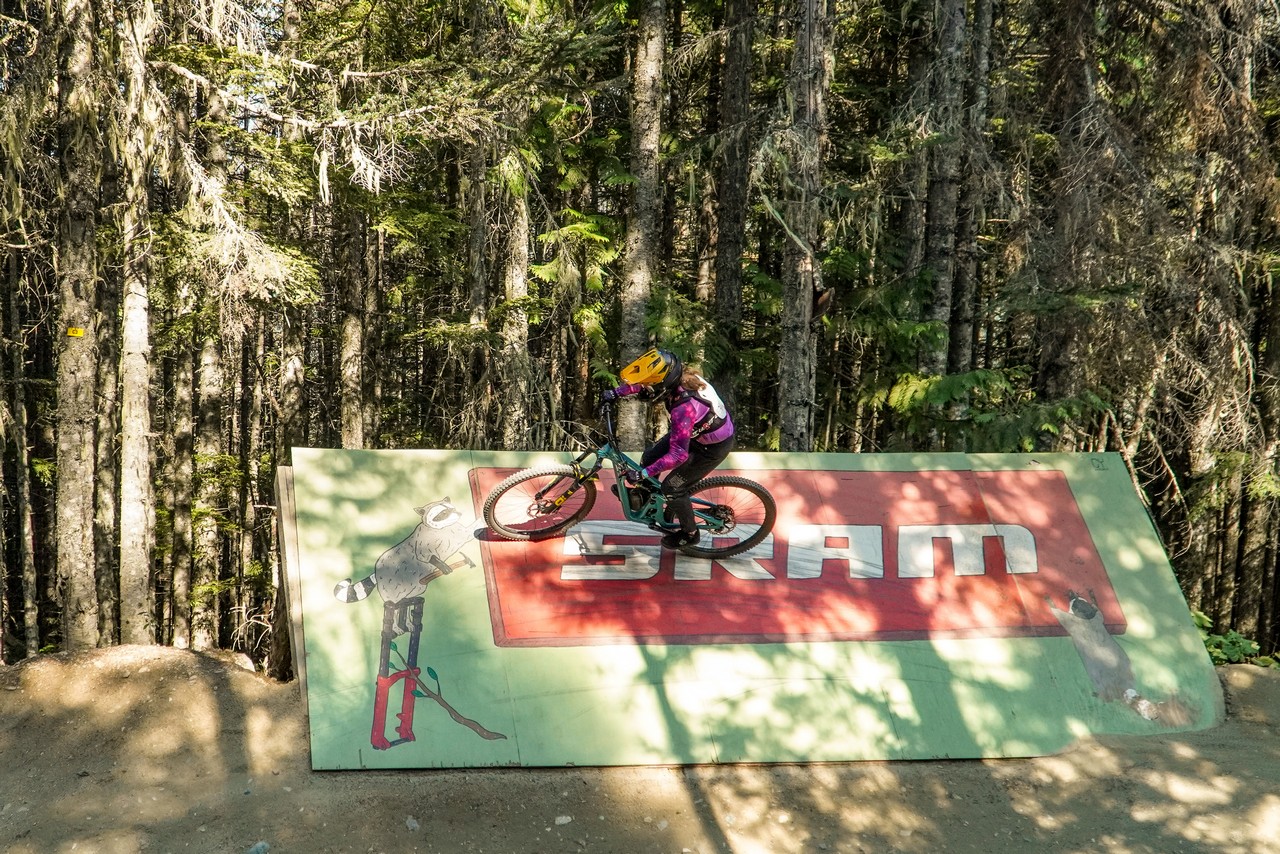
Due to its location, the Fitzsimmons area is the least exciting in terms of views, with virtually all trails hidden in the forest. However, in terms of thrills, it’s definitely the most intense here – mainly due to the large number of trails and the possibility of completing the most laps in a day (15 minutes uphill by lift, up to 15-20 minutes downhill, depending on the trail).
Garbanzo Zone
Garbanzo is primarily a very vast and rugged area on the upper part of Whistler Mountain. It’s the second oldest area of the Bike Park, boasting 33 trails, the majority of which are the most challenging lines (black and double black). Interestingly, there are no green trails here, so it could be considered an area for more advanced riders.
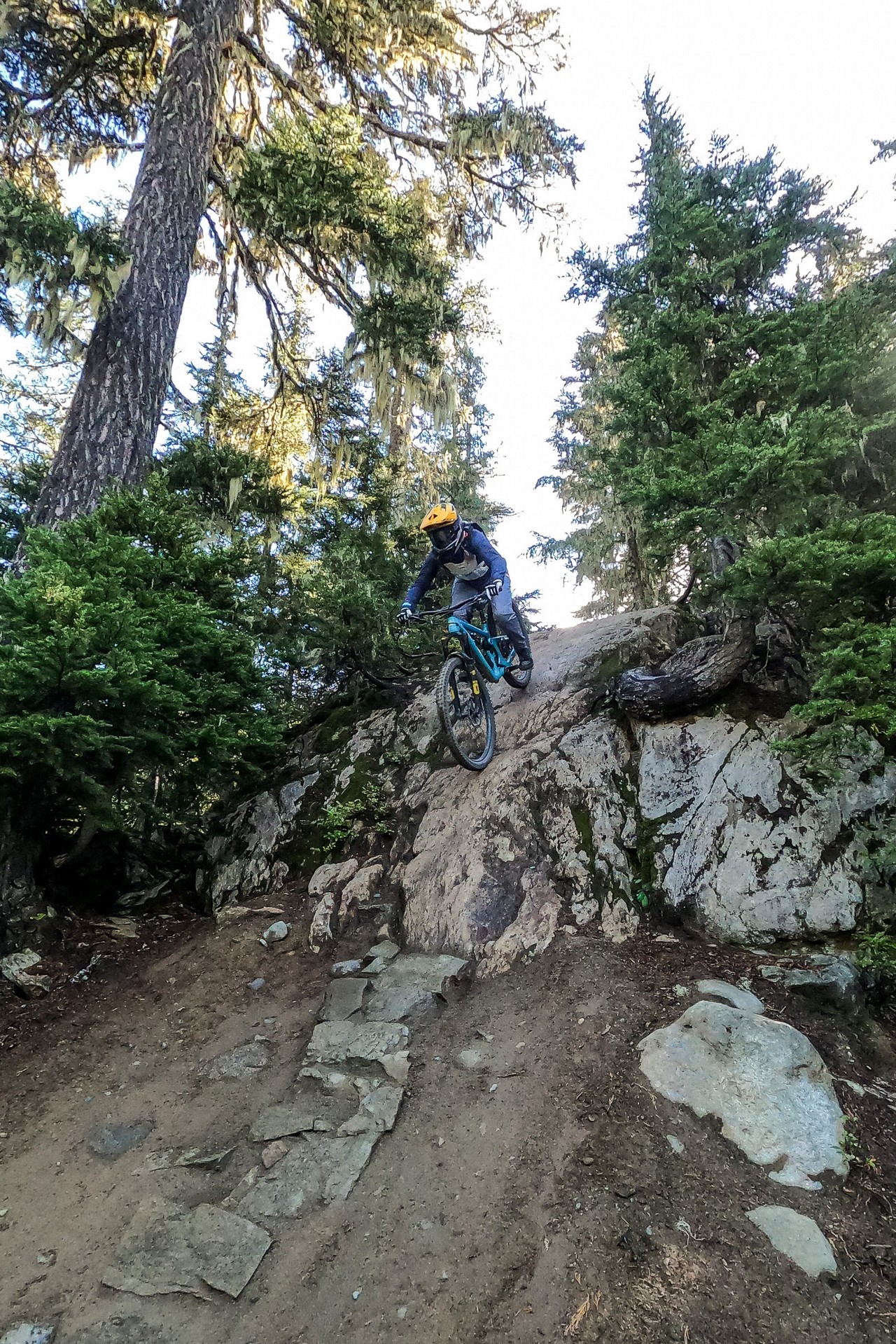
Among the true classics of this section are tracks like Freight Train, Original Sin, and the first-ever pro jumpline in Bike Park history – D1. This section also features iconic obstacles like Oakley’s step-up/hip, the vertical slab walls of Filthy Ape and Drop In Clinic, as well as the Kokanee container used as a step-up/step-down on the Freight Train trail.
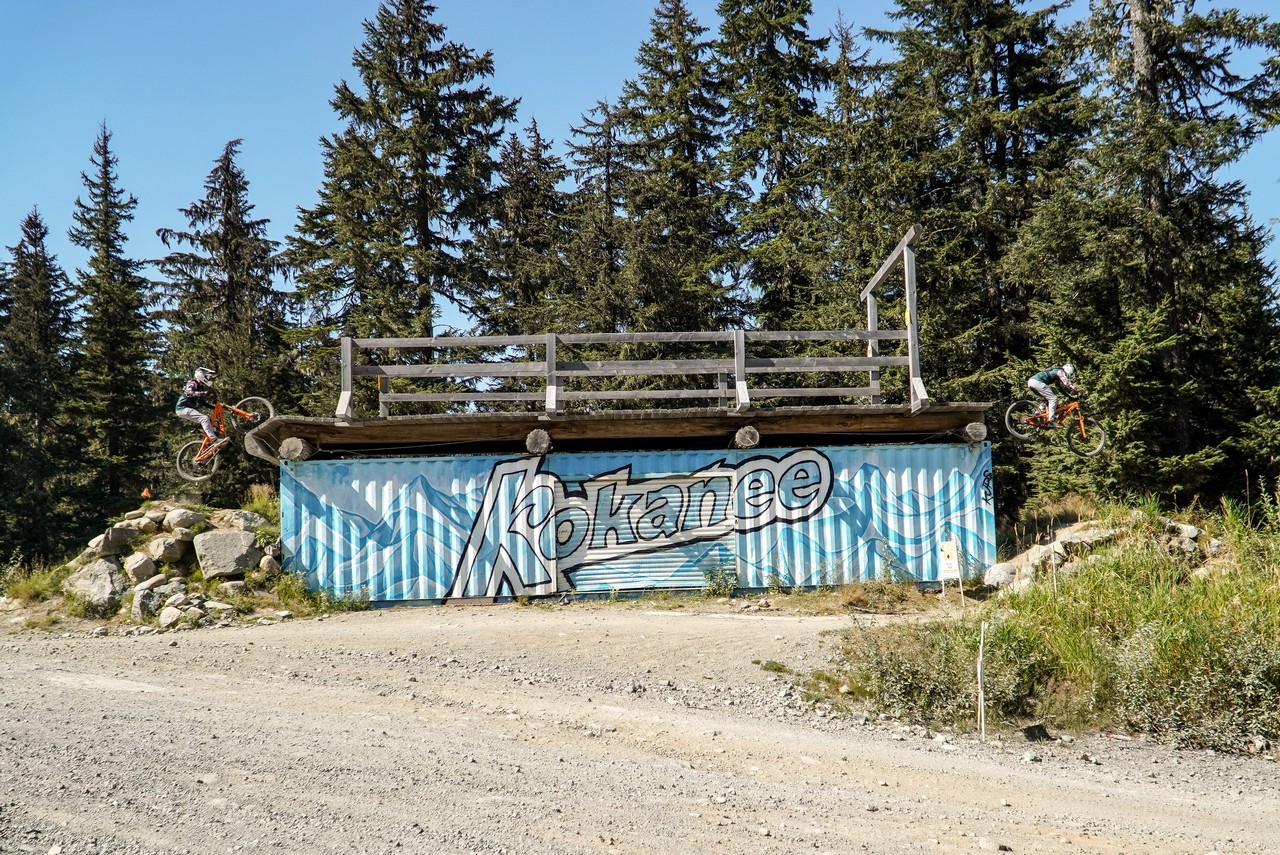
From the Garbanzo area, we also have the most convenient connections to the Creekside area. One option is to use the blue Una Moss line to the amazing blue Midgard flow trail. Another option is to use the gravel road or the black and red Sabertooth Horse trail halfway down the area, near the upper station of the Creekside gondola.
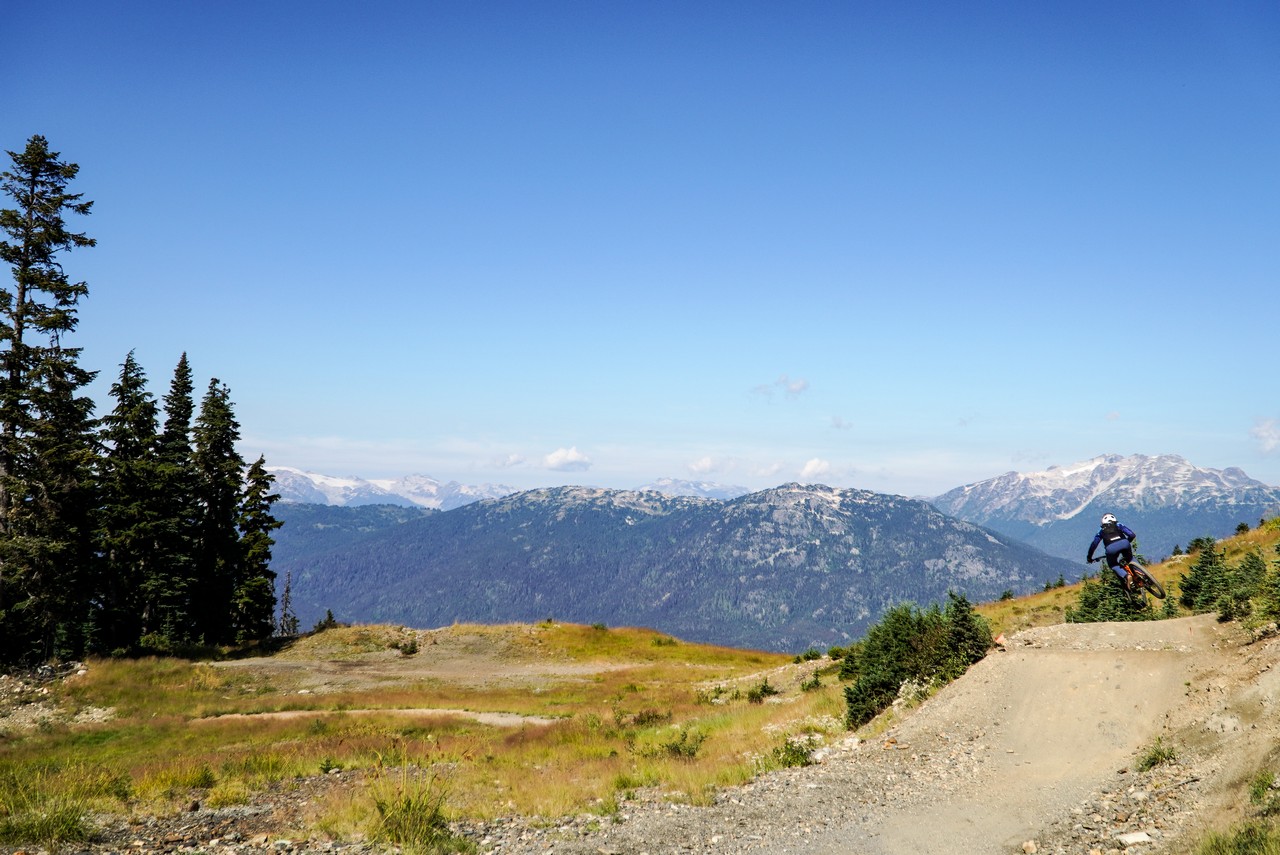
Peak Zone / Top of the World
The Peak Zone, or rather the Top of the World trail, is the true cherry on the cake of the Canadian Bike Park. It’s the highest line in the entire complex, and the Top of the World trail itself offers 6.2 km of descent and a vertical gain of 721 m. If you complete it all the way to the bottom, you’ll have an impressive 1,500 m of vertical descent!
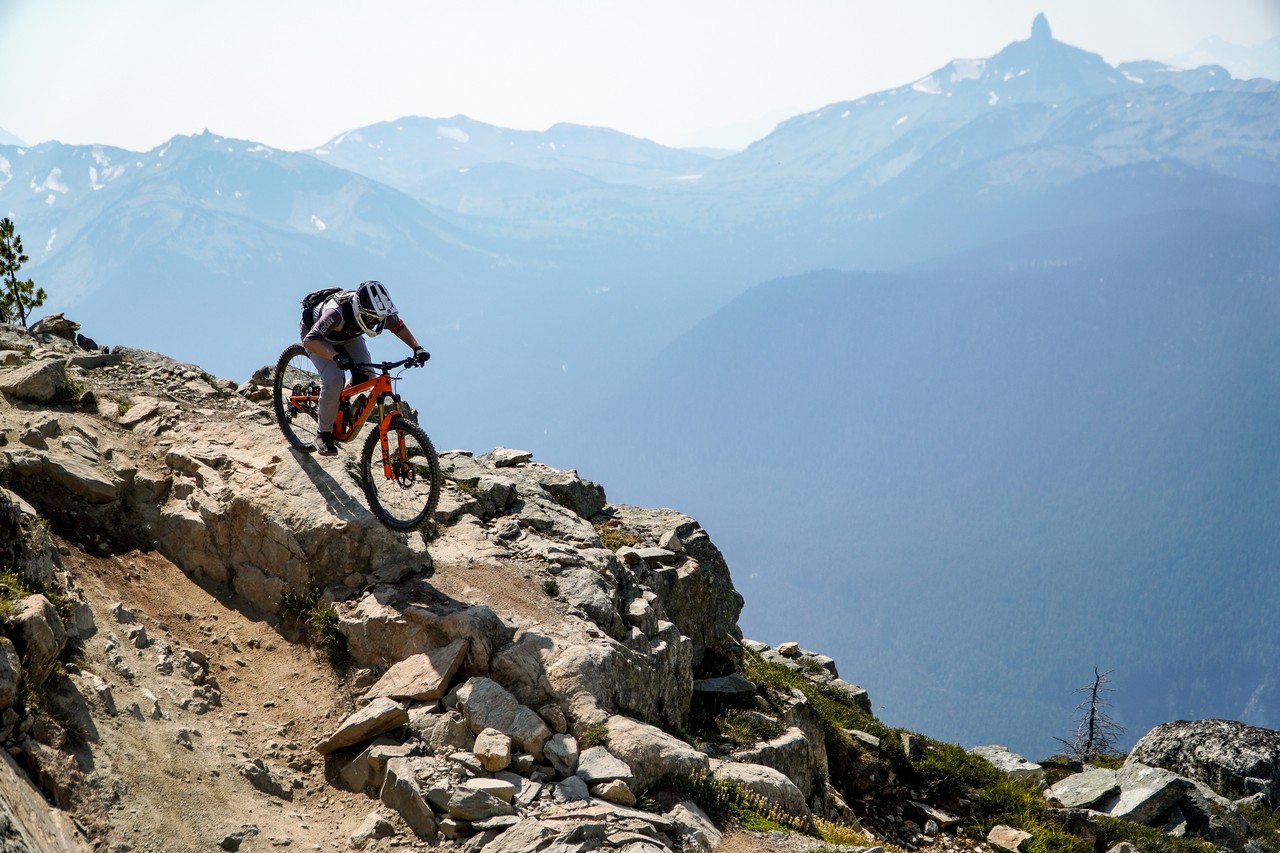
To reach the summit, we take a gondola from the main part of the Bike Park in Whistler Village. It will take us to the Peak 2 Peak lift station at 1,850 meters above sea level, from where we’ll take a short descent to the Peak Chair lift. The experience of riding this chair up is incredible, as we’re climbing a nearly vertical wall, so if you’re afraid of heights and/or space, it’s best to pack a change of underwear.
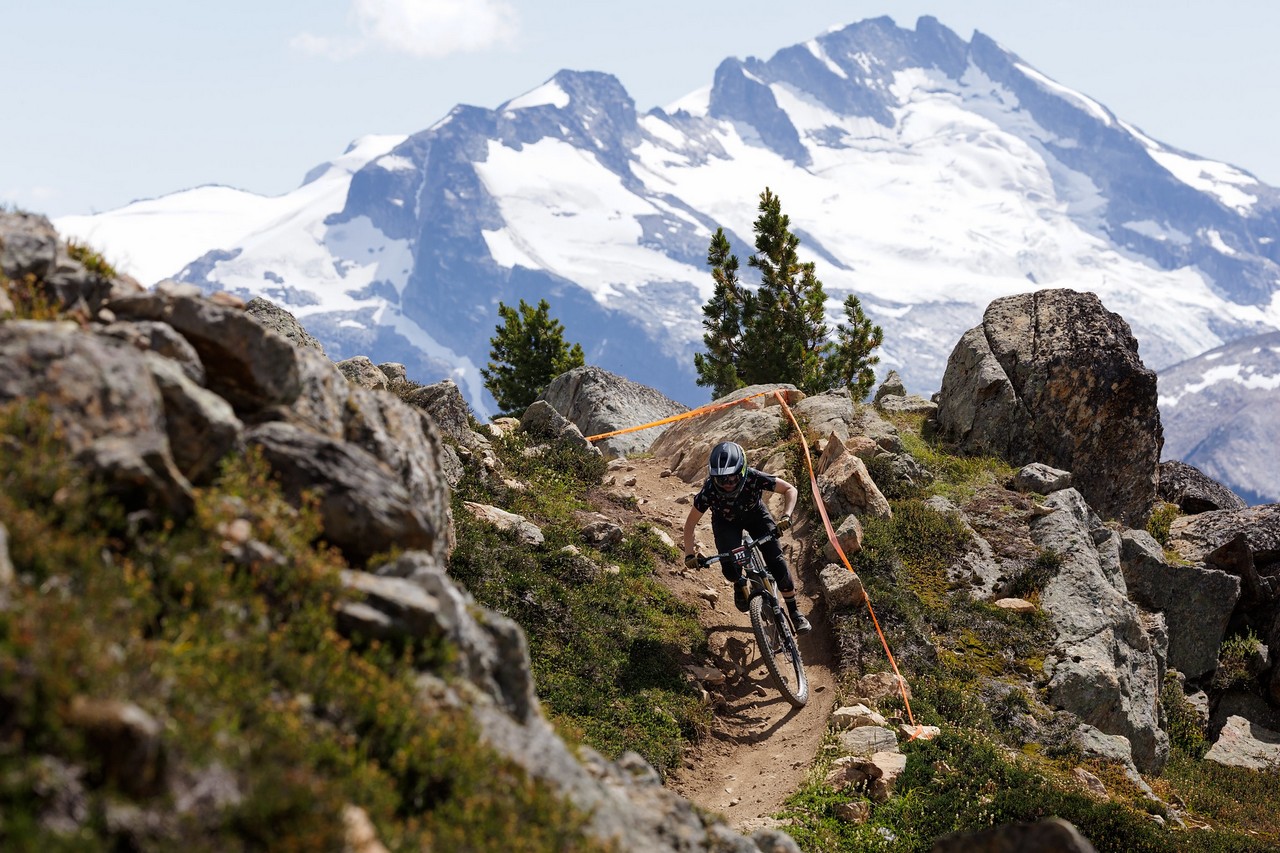
The summit sits at 2,182 meters above sea level, and right next to it is the Cloudraker Skybridge, a steel observation bridge at the very top of Whistler Mountain. The Top of the World trail itself is the most scenic line in the entire complex, marked in black, mainly due to its challenging, rocky beginning, which at times offers significant terrain exposure. Besides the sheer volume of rocks, it’s a typical high-altitude singletrack trail that then transitions into a smooth, technical line all the way to the top. Definitely worth the trip, even just for the photos!
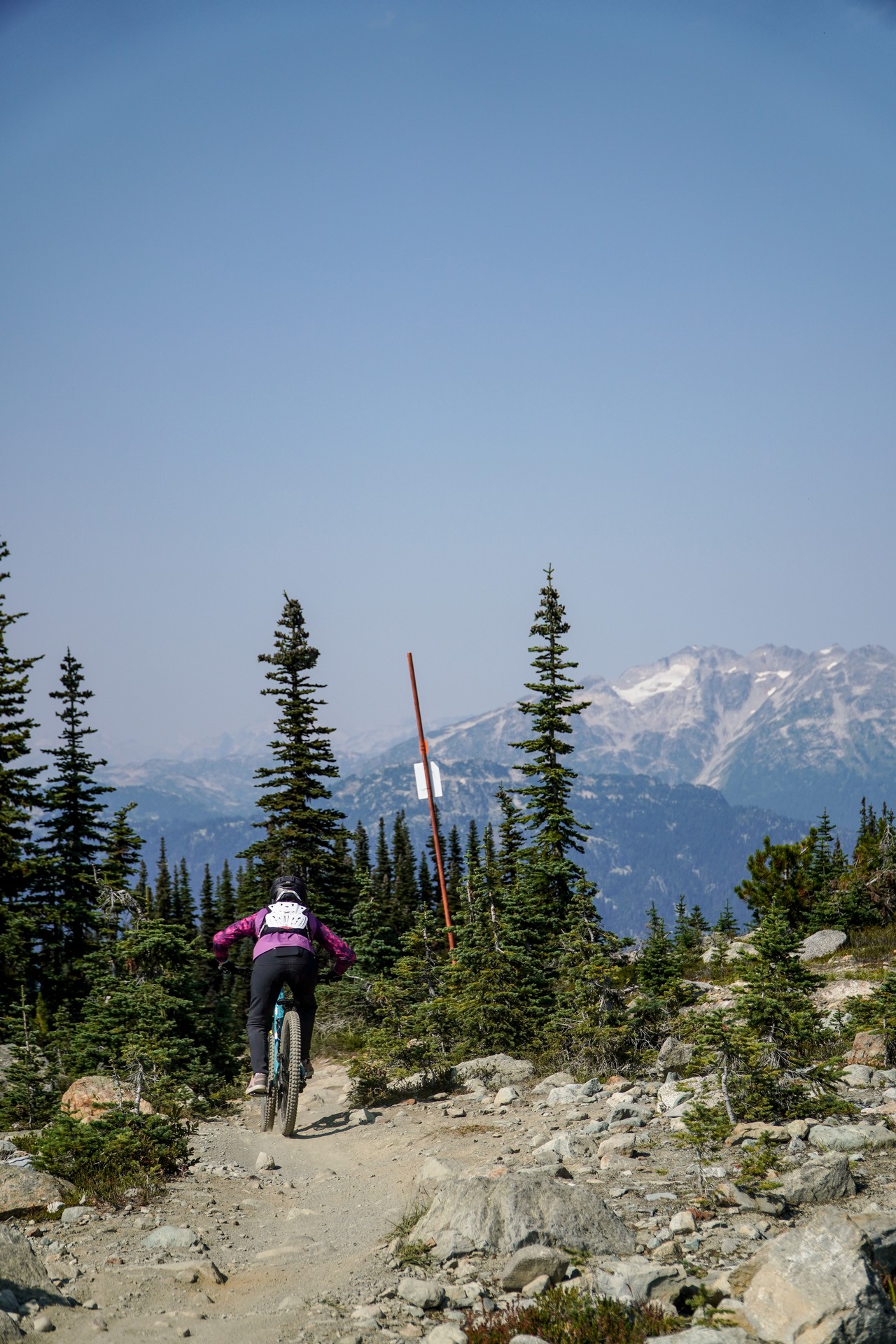
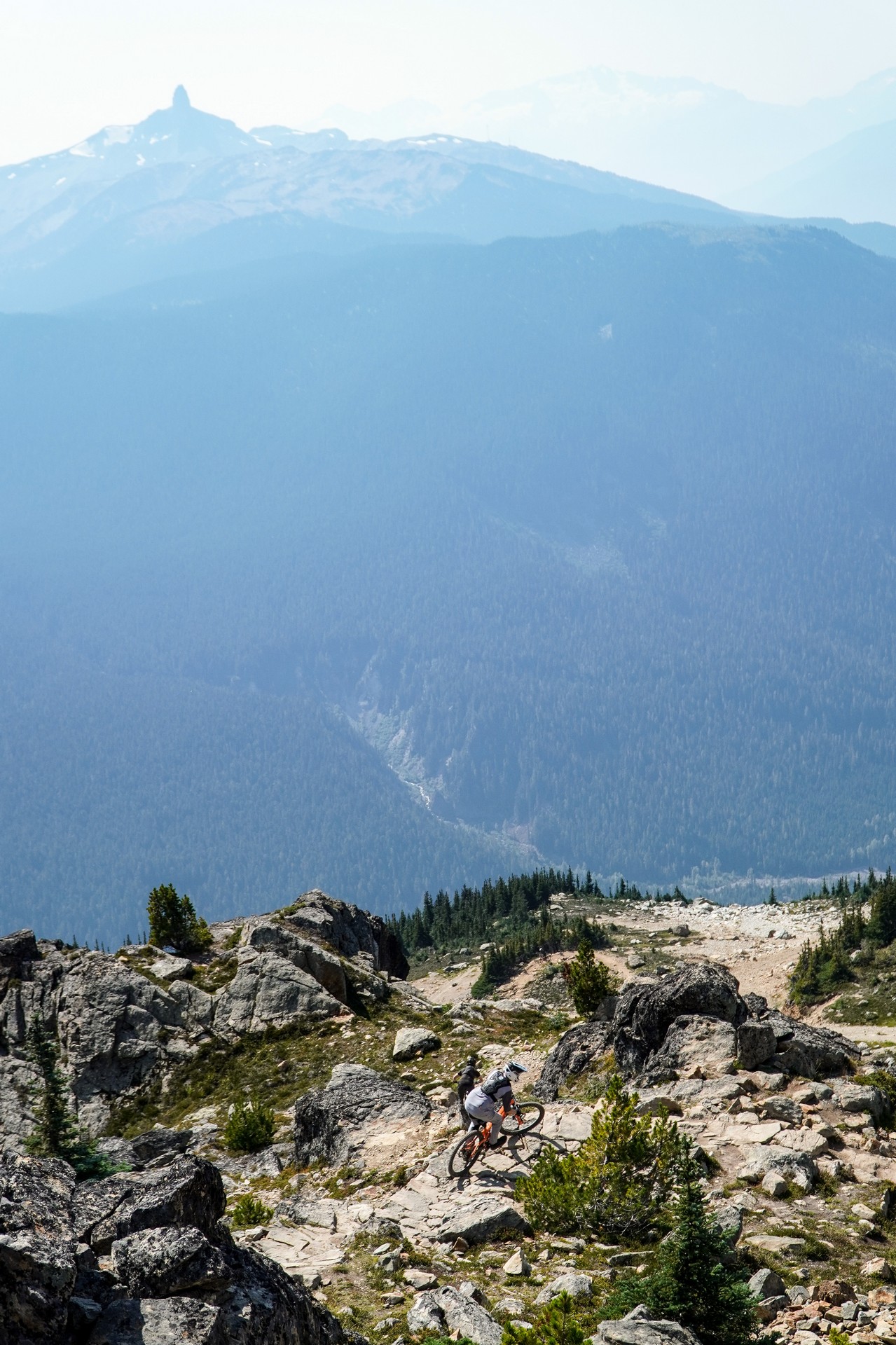
Please note! Access to the Top of the World trail is strictly limited and requires the purchase of a separate ticket. This season, the last day of availability was September 1st, when the gondola closed the following day due to winter preparations. However, this did not mean the trail was closed. Furthermore, access was free from September 2nd. The catch was that you had to ascend approximately 170 vertical meters from the Garbanzo lift’s upper station to the upper station of the inactive gondola…
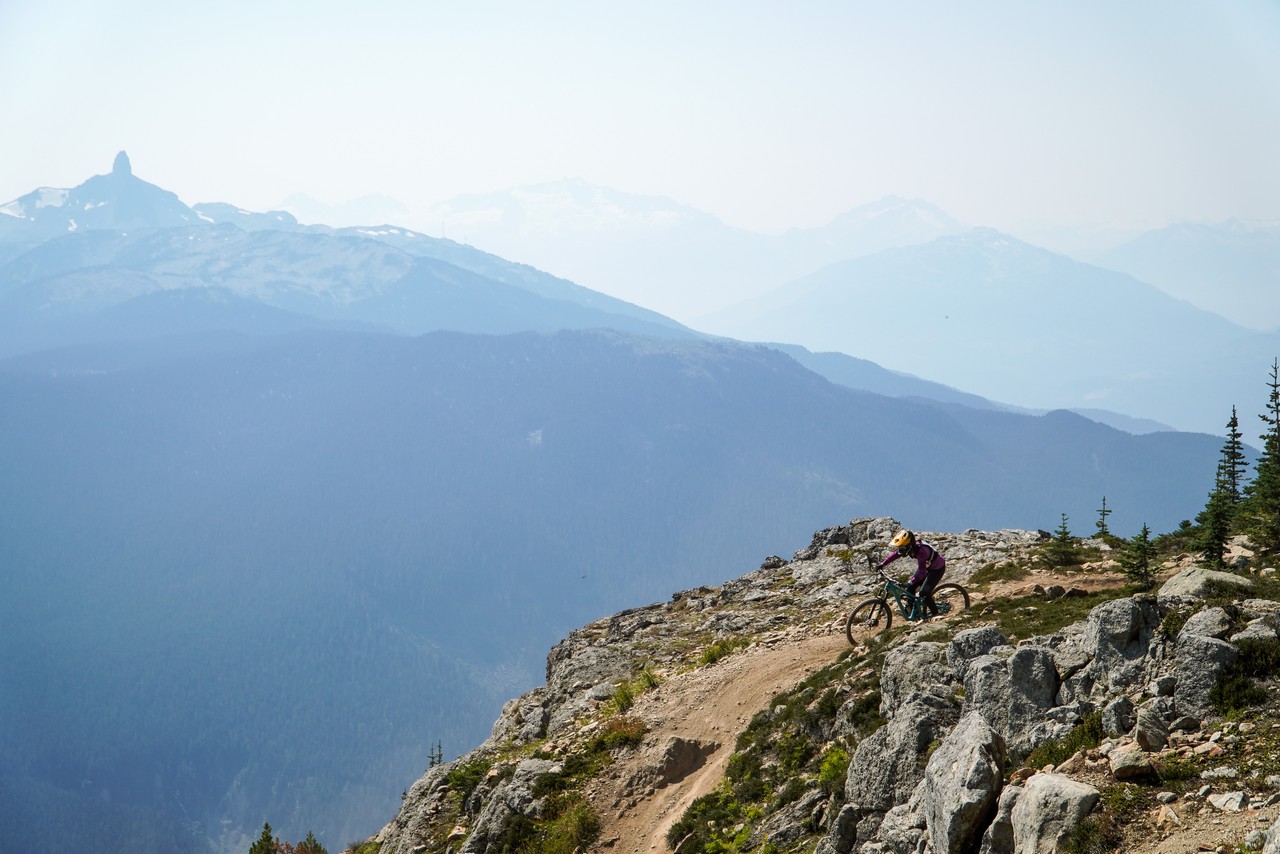
Creekside Zone
Creekside is the newest zone in Whistler Mountain Bike Park, first opening to mountain bikers in 2015. However, it wasn’t until three years later that it could be considered a fully-fledged area, as five new trails opened and riding in the zone began to make sense. However, in 2022, it was closed for the entire season due to the construction of a gondola, which allowed riders to comfortably travel up the mountain in the summer of 2023.
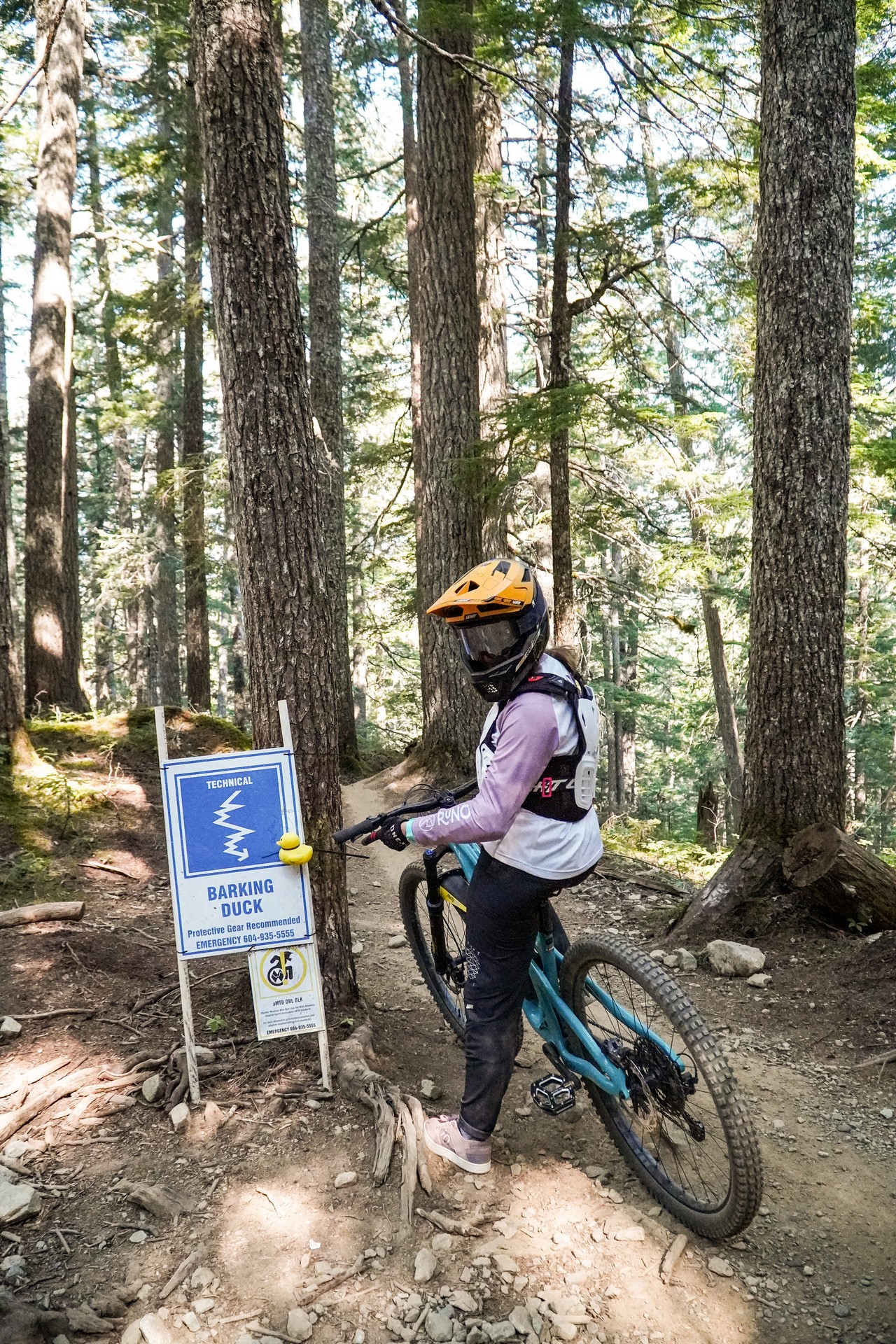
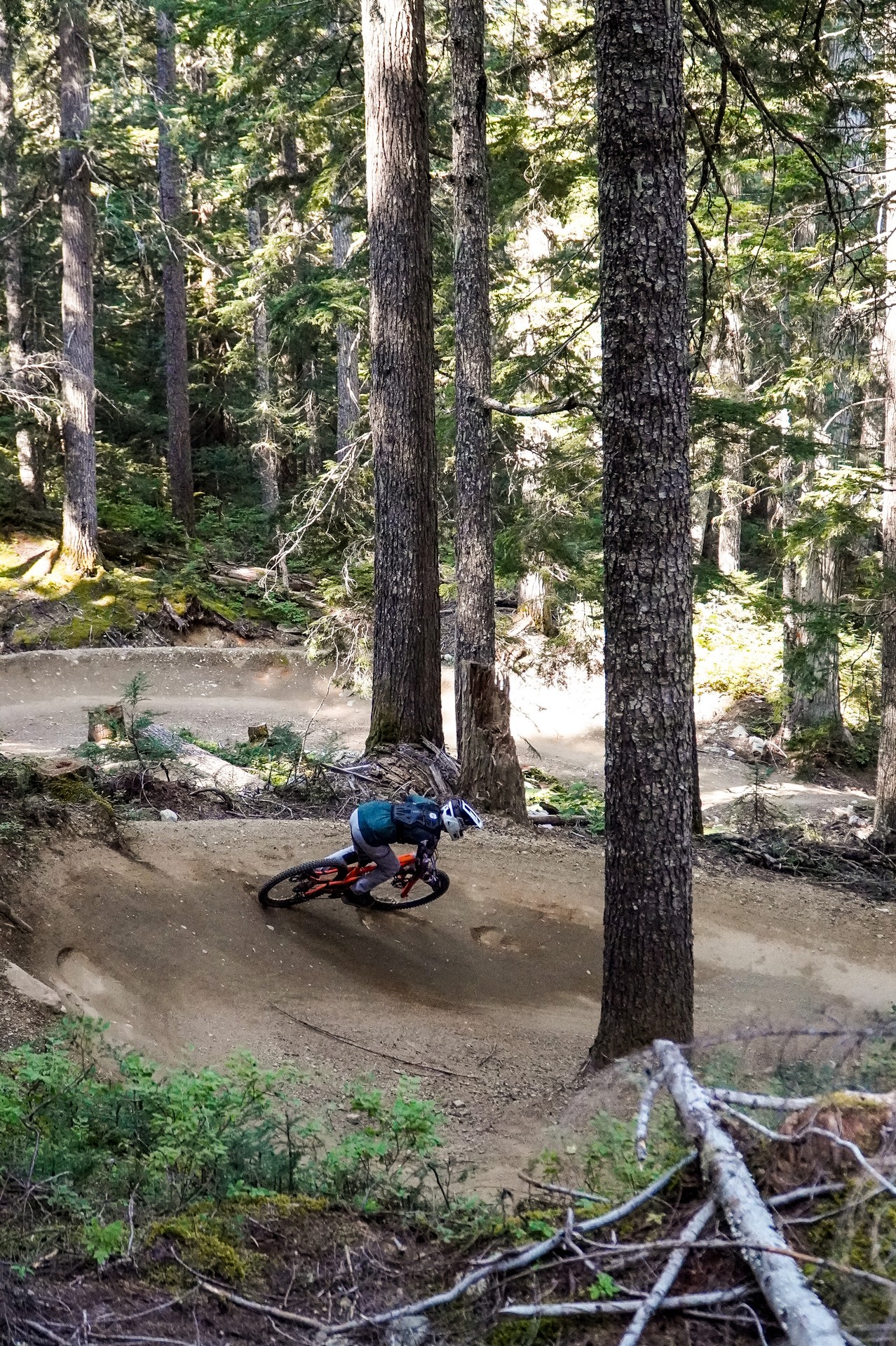
In the 2025 season, there were a total of 27 trails here, most of which have a completely different character than the lines in the Fitzsimmons or Garbanzo zones. It’s more European, technical, and very narrow in places. The vegetation in this section is also a bit different and more reminiscent of our closer regions. In addition to great blue flow lines (South Park and Bengal Bear), there are several cool and demanding technical lines (e.g., the blue ones: Spingnar, Call Me Maybe, and the black ones: Odesa, Delayed Fuse) and only one jump line—the black one, Insomnia, which has several large tables and is otherwise… boring.

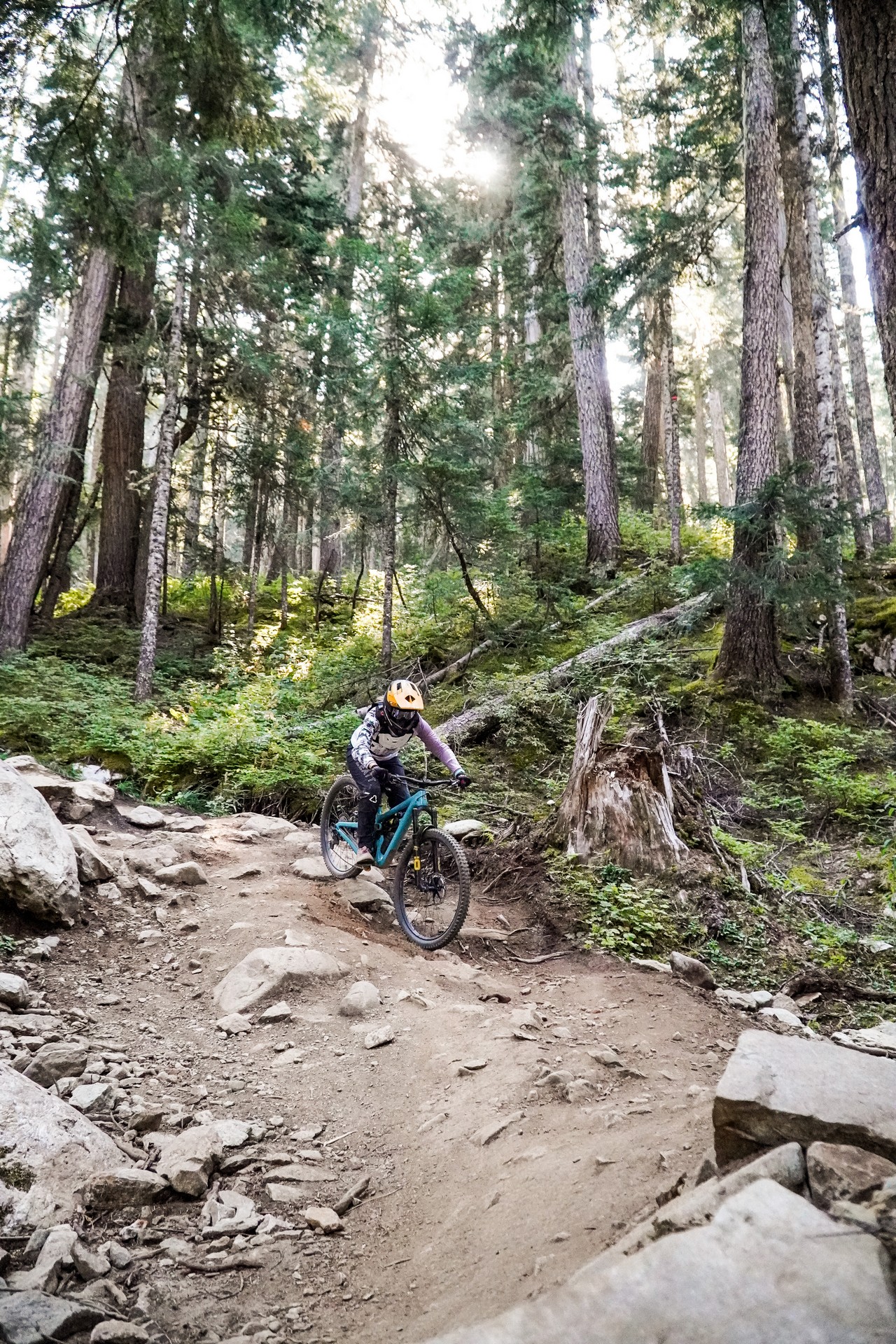
For now, the only downside to this section is… access. Apart from the gondola’s lower station, the Creekside trails can only be accessed from the Garbanzo area:
- from the top, where the Garbanzo and Peak zones connect: probably the best possible place to complete all the Bike Park zones in a single descent. Choosing the blue Una Moss trail in Garbanzo, we reach a place (right at the end of the Top of the World line from the Peak zone) where the blue Midgard or the black and red Miss Fire await us.
- During our stay, the upper part of Midgard was closed for renovations and we used the official gravel detour, the Vaurnet Road.
- At the upper station of the Creekside Gondola: If we want to make some laps at Creekside, using the gondola is our only option, as it avoids the other areas of the Bike Park. Unfortunately, only the most challenging lines are accessible from here: the black-and-red Sabertooth Horse and the red 1199 downhill run (which opens sporadically). To reach the start of most of the trails, we have to take a several-hundred-meter descent down a gravel road to the intersection of the blue Midgard trails (its terminus) with South Park and Elixir. This is where the fun in this area truly begins.
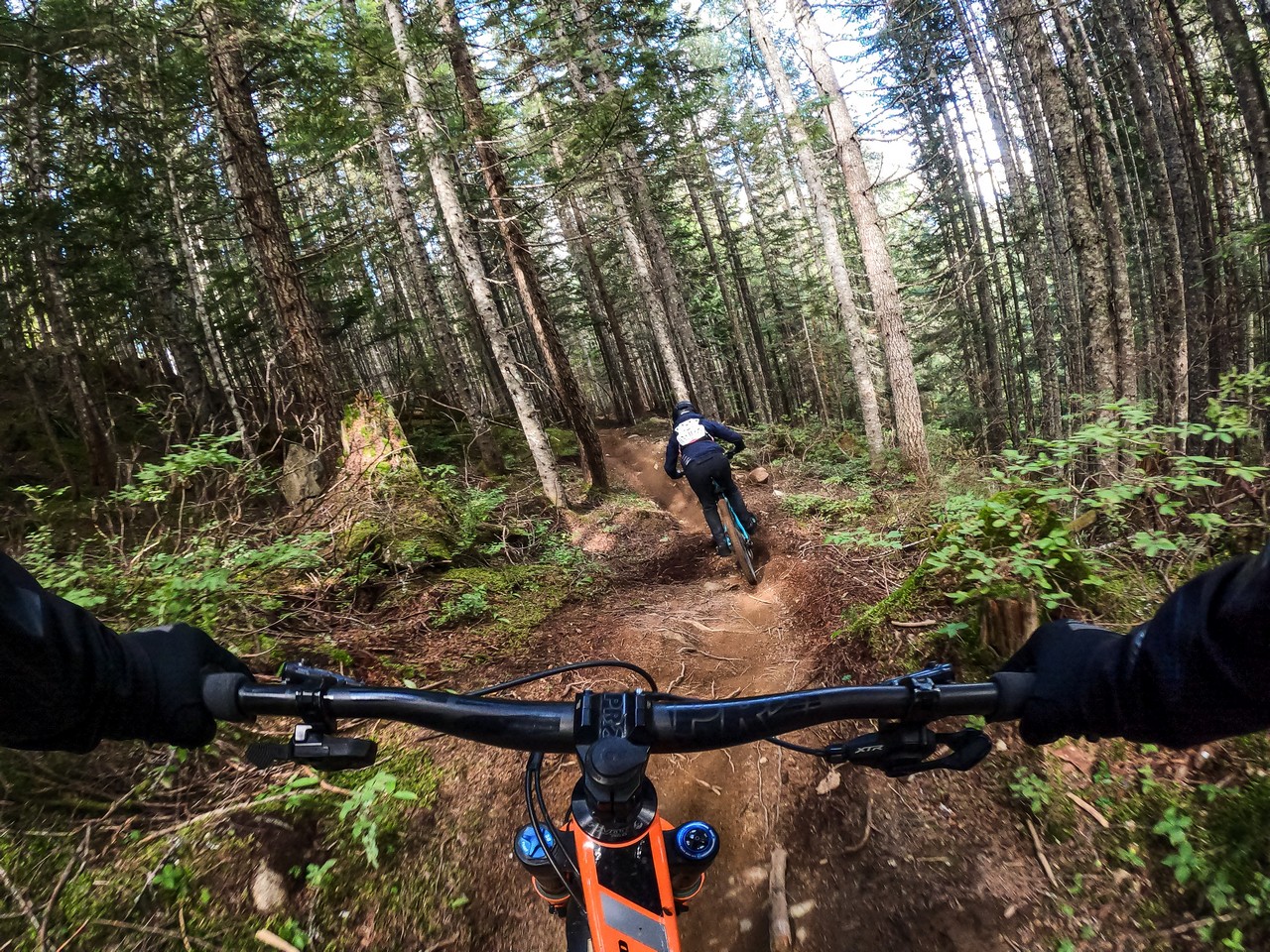
Finally, it’s worth noting that the Creekside area is home to the most challenging run in the entire complex: red downhill trail 1199. This run was built in memory of Canadian downhill racer Stevie Smith. Its name comes from the number of points Stevie Smith earned during his overall World Cup DH victory in 2013.
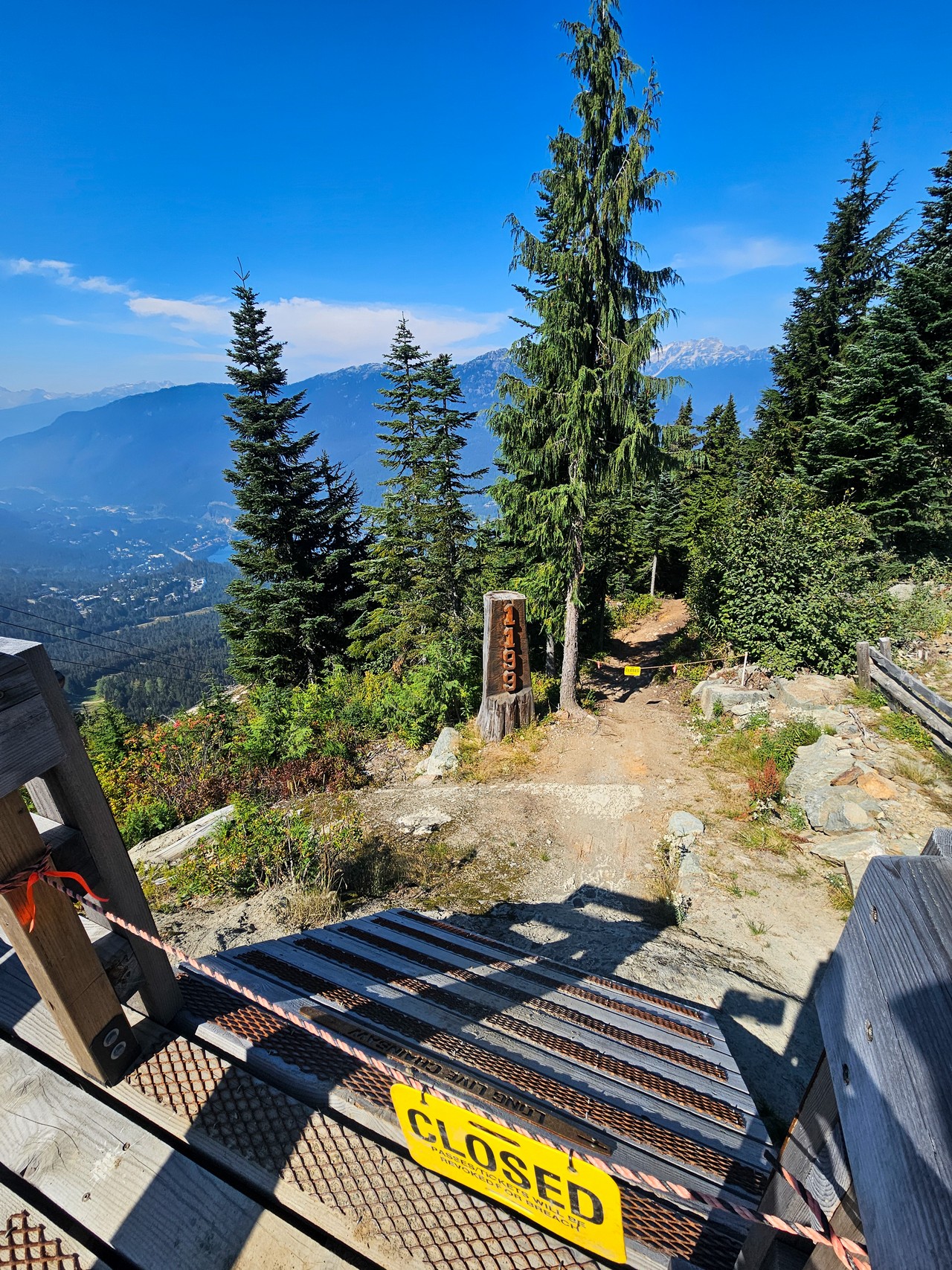
1199 is a 2.5km trail with a vertical drop of 479m. It is open to the public only during special events and is closed to the public during normal operations. It features everything a course worthy of the world’s most prestigious downhill race should have: steep drops, root carpets, huge rocks, as well as twisty switchbacks and big jumps. For the first time in Whistler’s history, a round of the UCI Downhill World Cup will be held here from September 25-27, 2026.
Movie corner:
Useful information:
- Distance from Warsaw to Whistler is only 8140.47km.
- A flight from Warsaw to Vancouver takes 12 hours in the air, at best. Of course you need to add time spent at airports and the 134km journey from Vancouver Airport, which takes 2-3 hours by bus.
- Whistler Mountain Bike Park consists of four zones, each with different opening times. The 2025 season was as follows:
- Fitzimmons: 16 may – 13 october
- Garbanzo: 14 june – 21 september
- Creekside: 7 june – 21 september
- Peak / Top of the World: closing date was 14 september
- Our trip took place from August 30 to September 17, and while writing this news, the first snow had already fallen in Whistler (first snowfall on September 27).
- The Bike Park map features 100 official routes, but the website’s trail status section lists a staggering 125! A popular practice here is to divide a single route into upper/lower sections, and in the case of the A-Line, into five sections. The markings are also slightly different than those found in Europe. The main change is on the black-red line, where red is the most difficult option in Canada.
- In addition to the bike park trails, there are a ton of trails on other mountains in the area. Some are official, others aren’t. Basically, there are so many here that it’s not even worth counting.
- Temporary closures of trails or entire areas may occur, depending on weather conditions or wildlife activity. Needless to say, you shouldn’t approach or feed wild animals… It’s more than likely you’ll see a bear (we saw 12 of them), a marmot, or other forest creature.
- Food costs are such that for simple calculations, you can safely assume amounts of 5-10 CAD per item (e.g., a small package of cheese, ham, etc.). Restaurant food costs can easily be around 20-50 CAD for a single meal.
- The Bike Park offers a variety of ticket types, but there’s a significant lack of options for Europeans. Therefore, for a 2-3 week trip, the most cost-effective options are the full season (829 CAD), 5-day (429 CAD), or 10-day (699 CAD) pass. A one-day pass costs 90 CAD.
- During the main summer season (May 16 – September 1), extended play tickets (90 CAD) are available, which run from 3:30 PM until closing time. This is an option for those who prefer to ride outside the Bike Park but still want to use it occasionally.
- In September, the fall pass is released, which this year cost 445 CAD.
- Tickets for the Top of the World trail are limited per day and must be purchased separately.
- Bike tickets also allow you to use other lifts without your bike. This means that a trip on the Peak 2 Peak cable car or to neighboring Blackcomb Mountain is definitely worth it.
- Interestingly, lift tickets are manually checked by staff, who use readers to obtain detailed user information (name, photo, date of birth). On your birthday (I checked!), the reader plays a special melody, which results in birthday wishes from the staff on every ride.
- If you want to learn about the local culture and the indigenous people who inhabited this area, you must visit the Squamish Lil’wat Cultural Centre.
- It’s worth renting a car and driving to nearby places like Squamish and Pemberton. Not just for riding your bike ;) If you have more time or inclination, Vancouver and Vancouver Island are also great places to explore.
- Another interesting activity, not widely available in Europe, is helibiking. The Coast Range team has the perfect offer for this type of adventure. Flights depart several times a day in small groups, and the cost is around 470 CAD per person. Unfortunately, we were unable to participate due to a fire that spread near the trail…
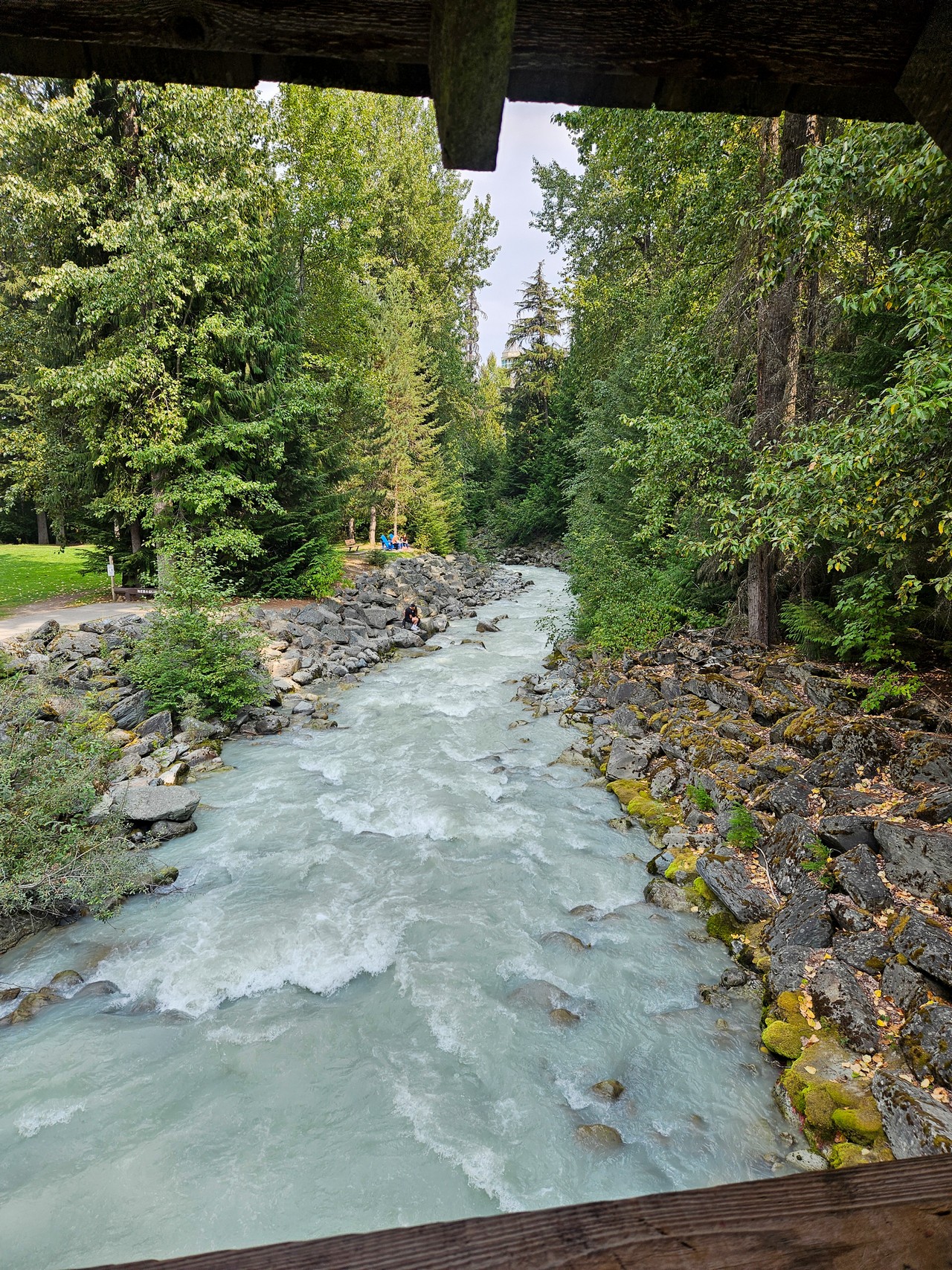
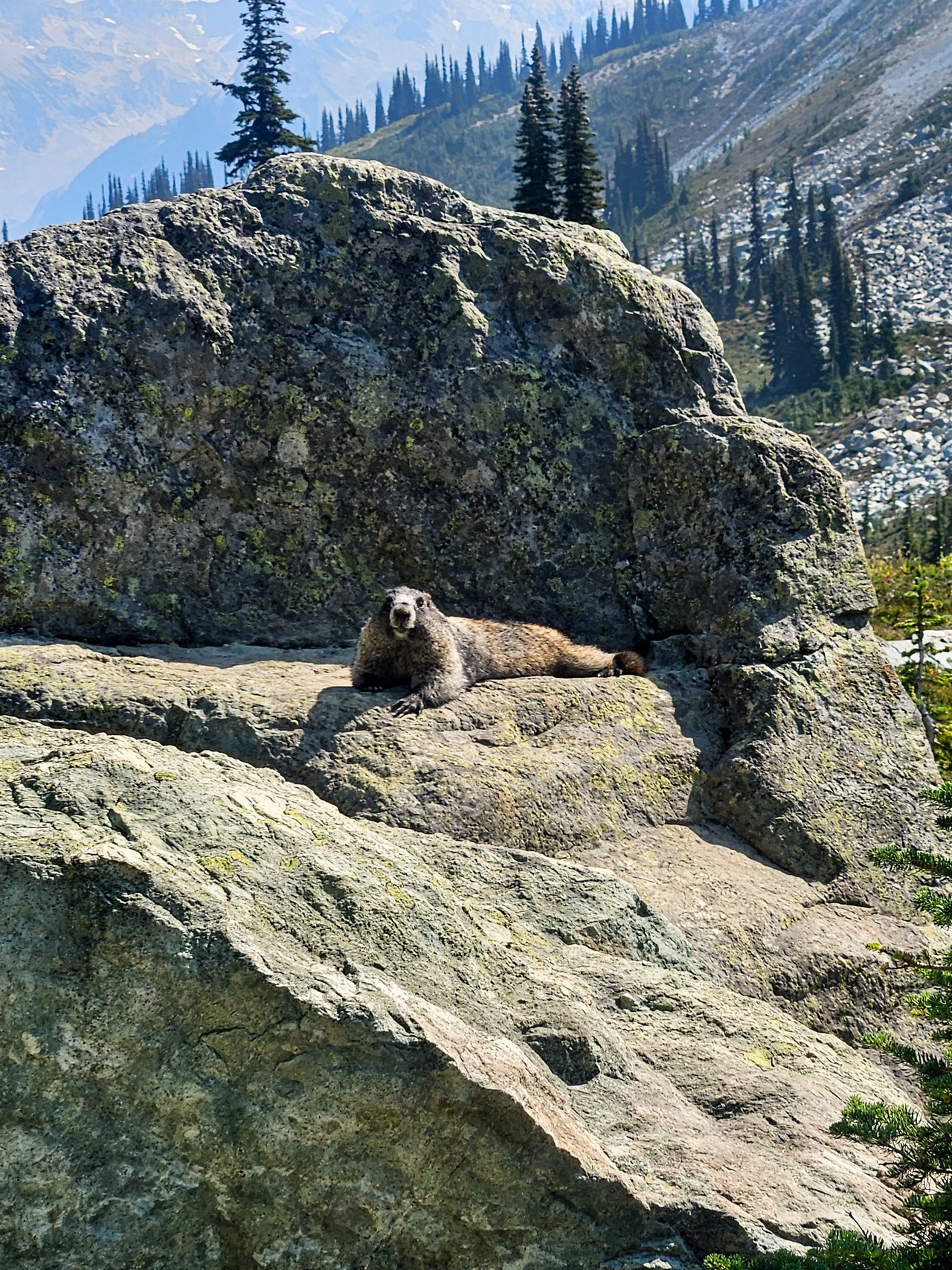
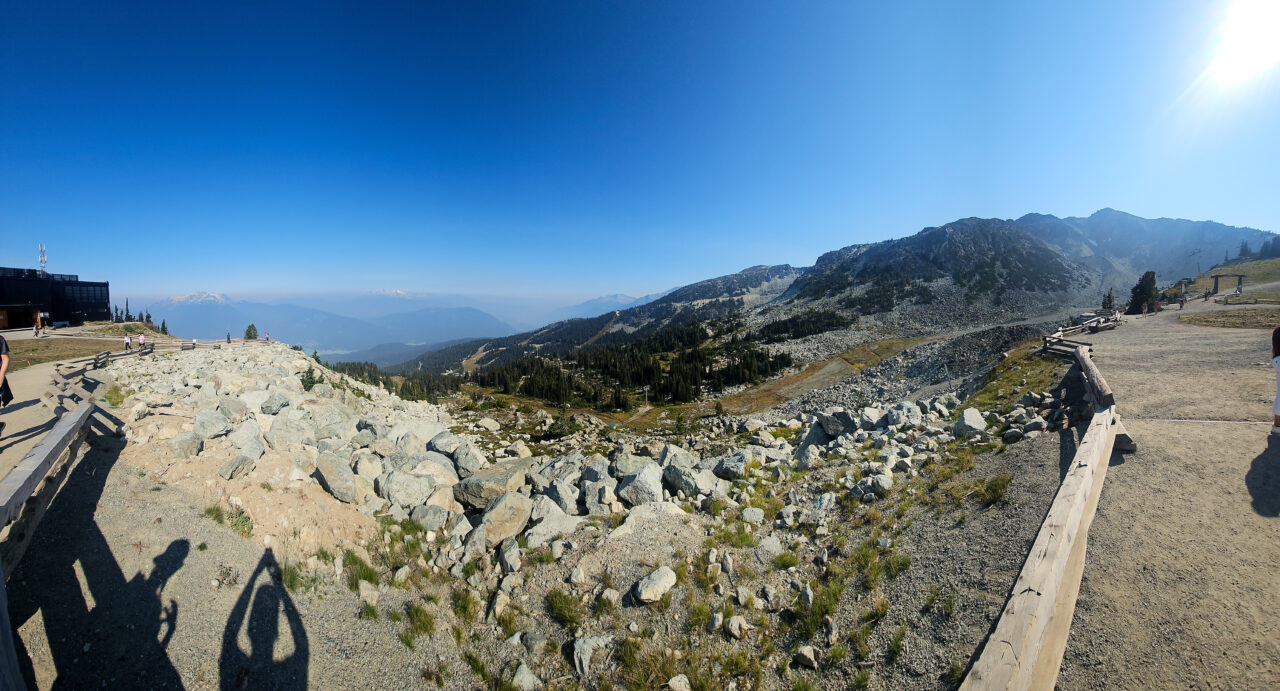
About Whistler Mountain Bike Park
Whistler Mountain Bike Park is considered the mecca of mountain biking and the number one bike park in the world. It all began in 1999 when the first Fitzismons zone, exclusively for mountain bikes, opened in Whistler, British Columbia, Canada. Today, it encompasses four diverse zones offering over 100 official and diverse trails, totaling 80 kilometers and boasting an elevation gain of up to 1,500 meters.
Official website whistlerblackcomb.com
Media: facebook, instagram
